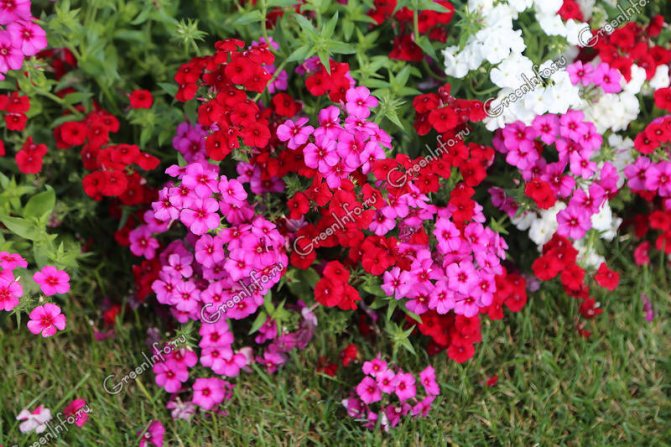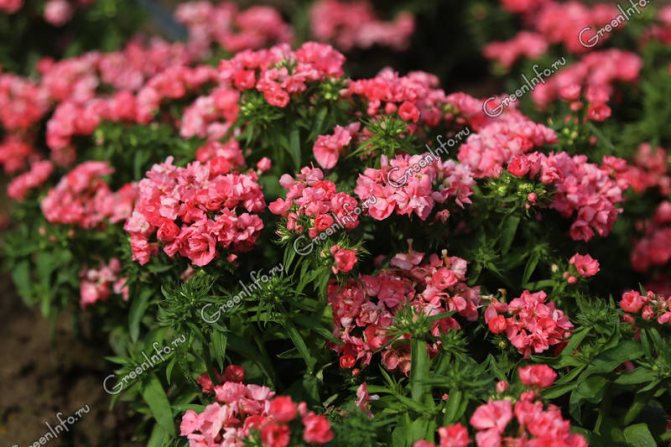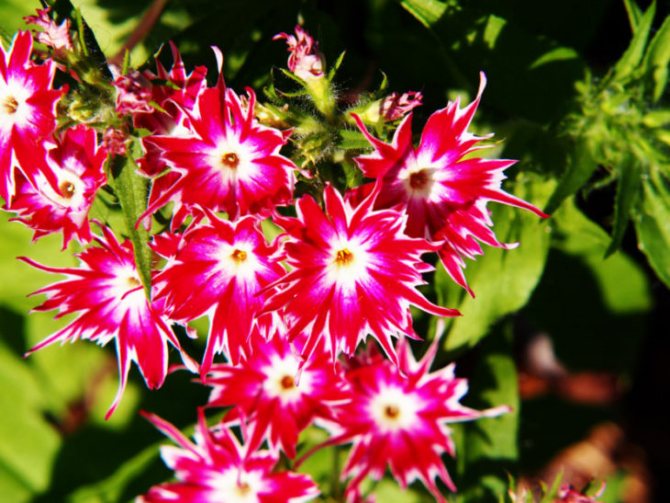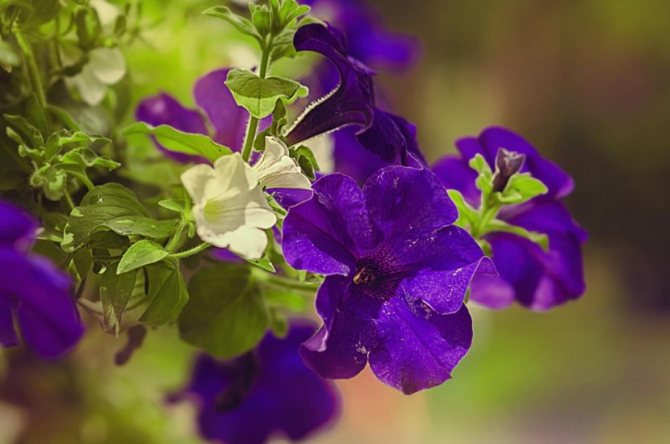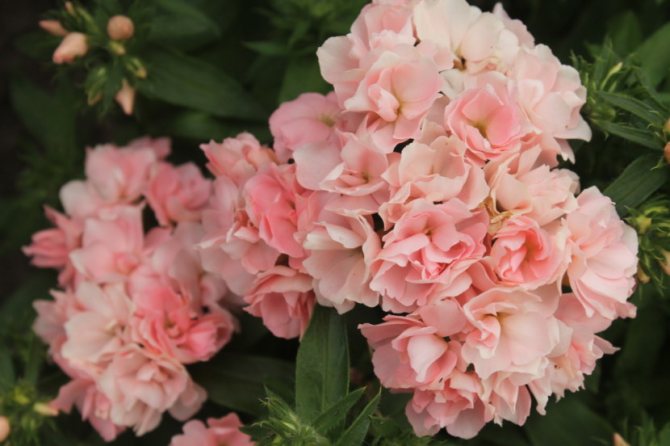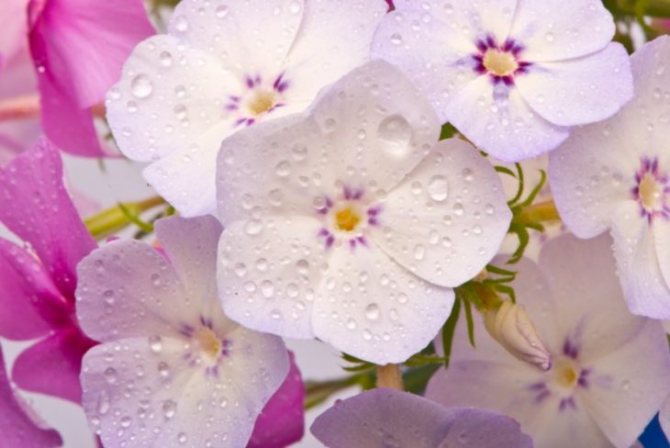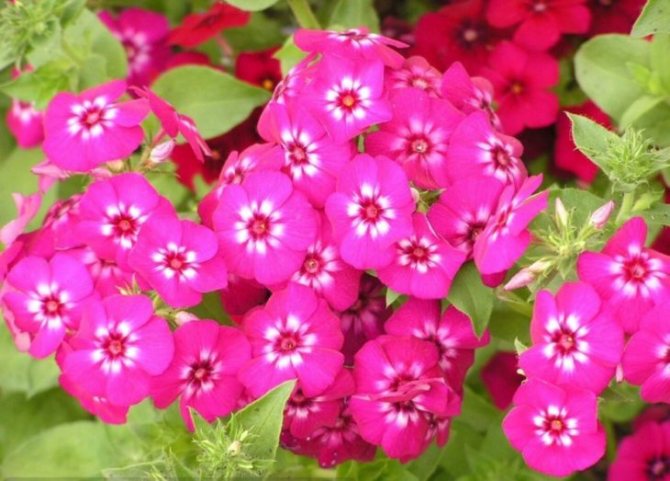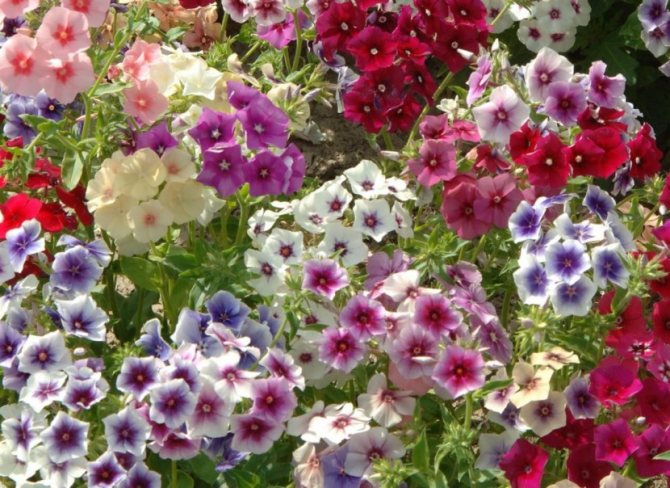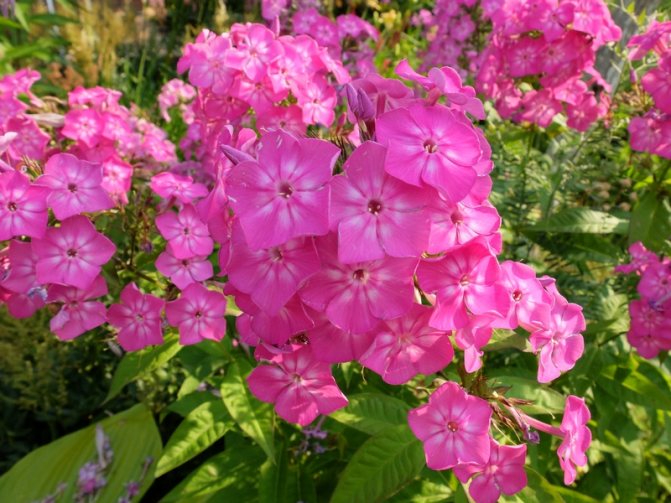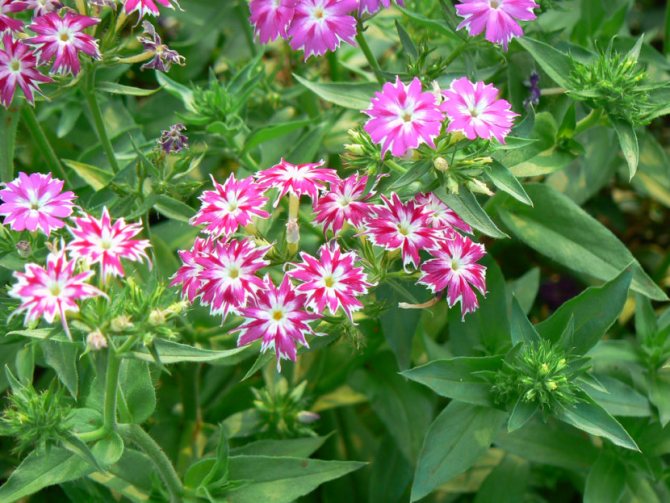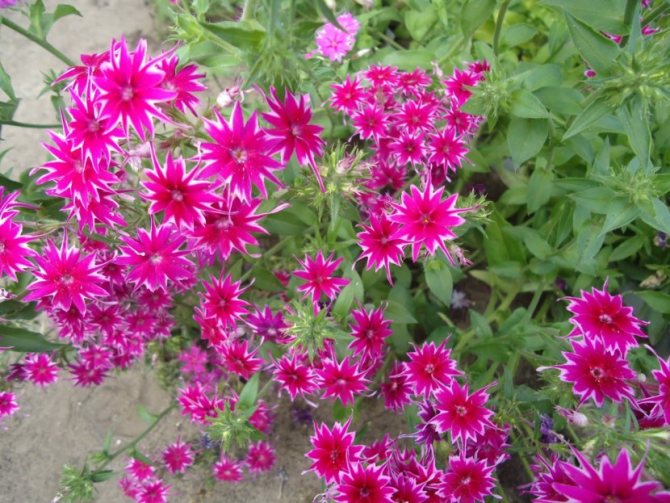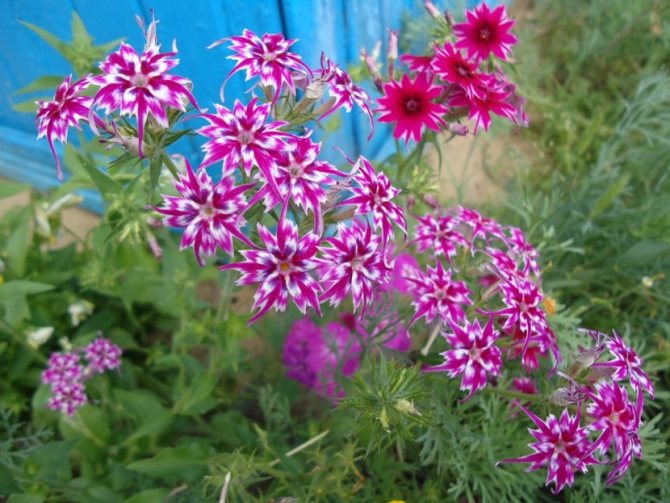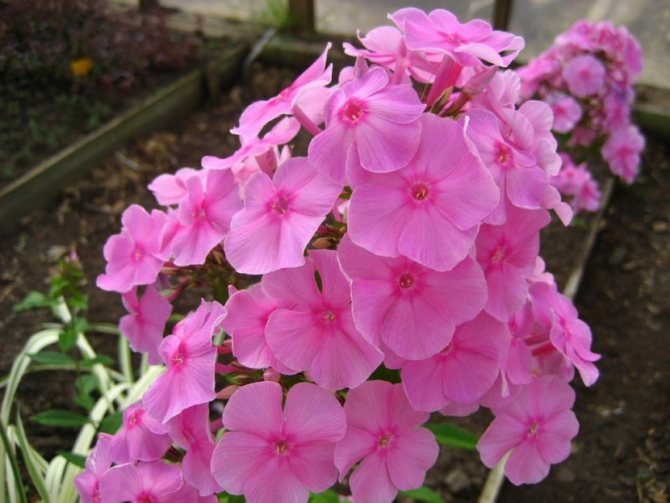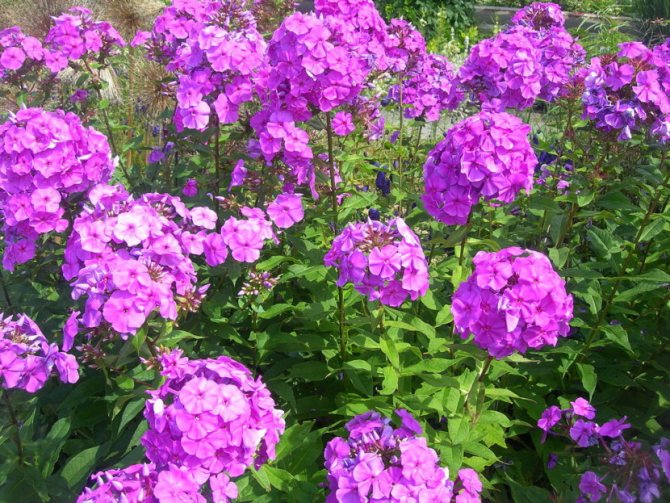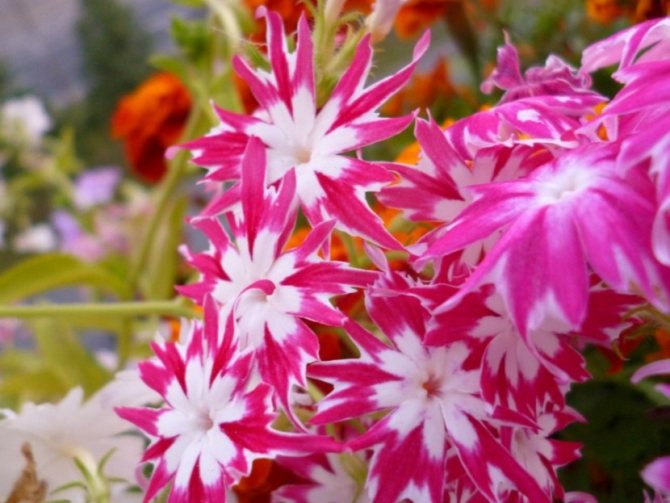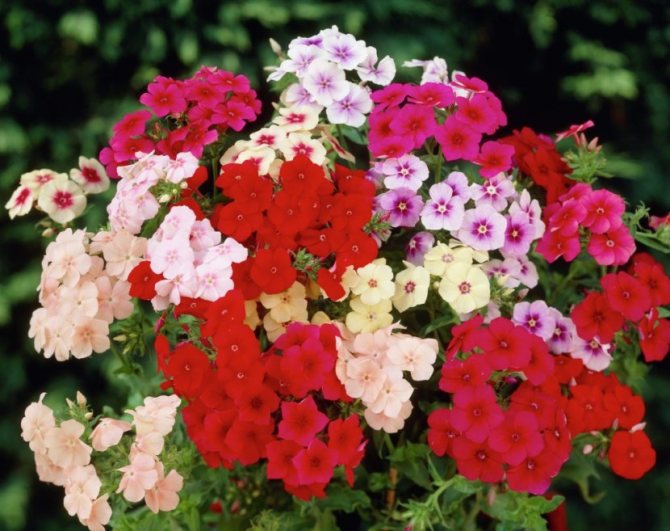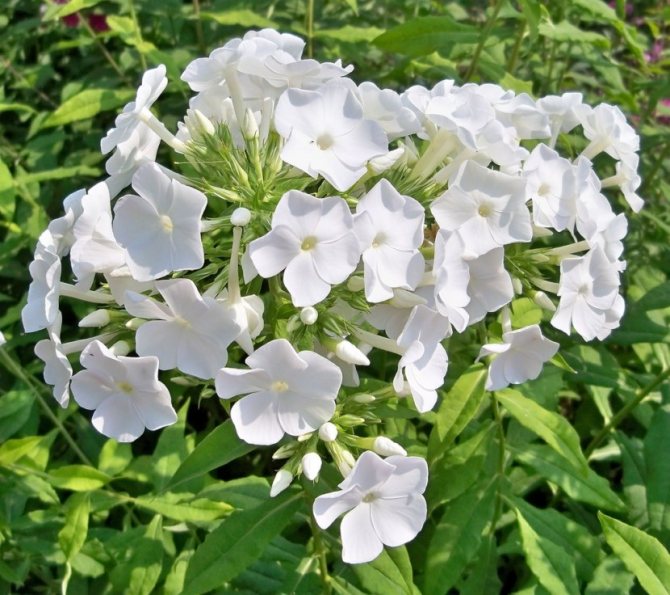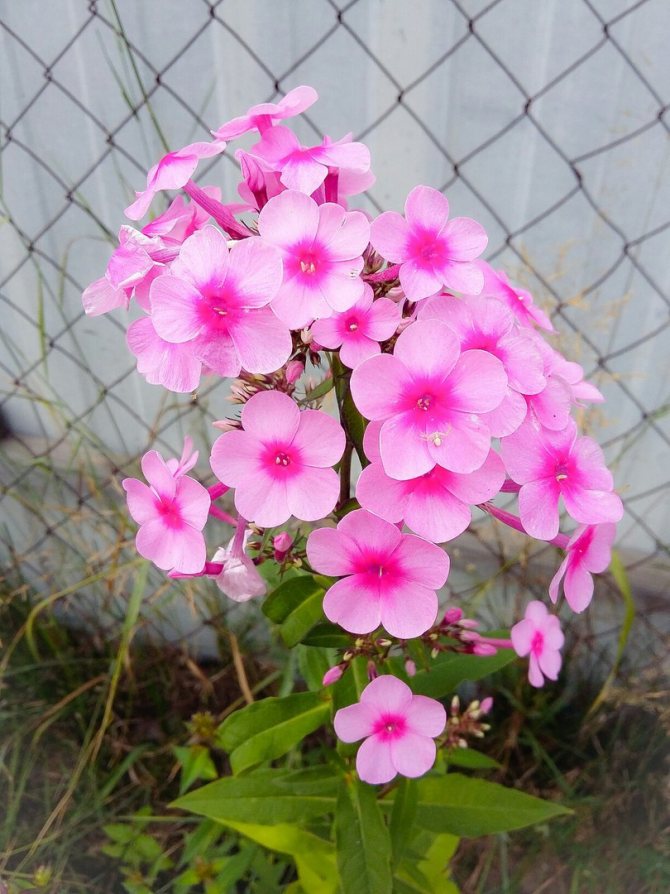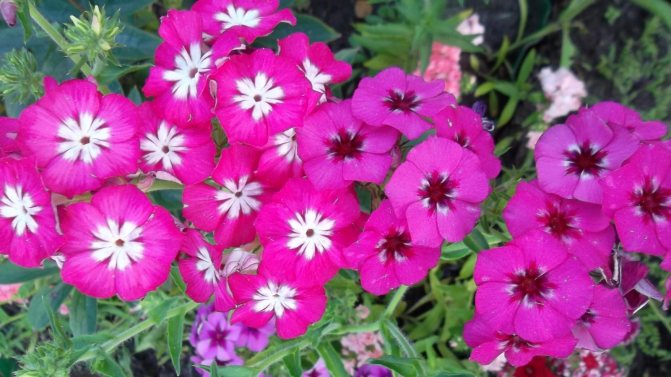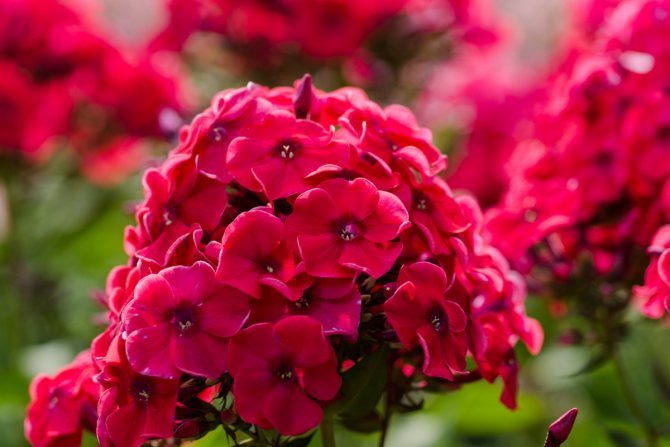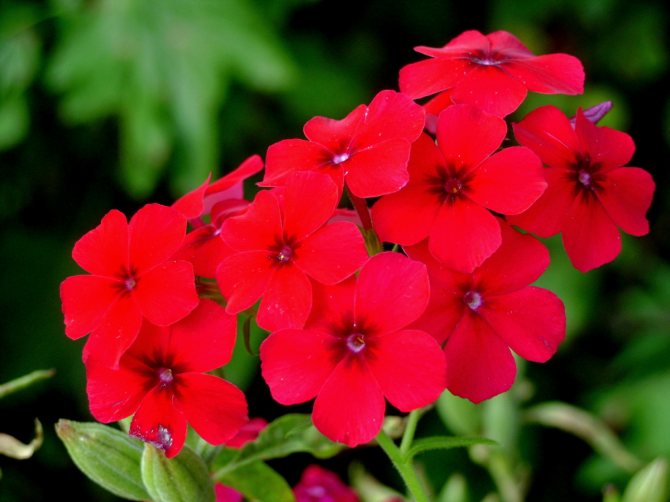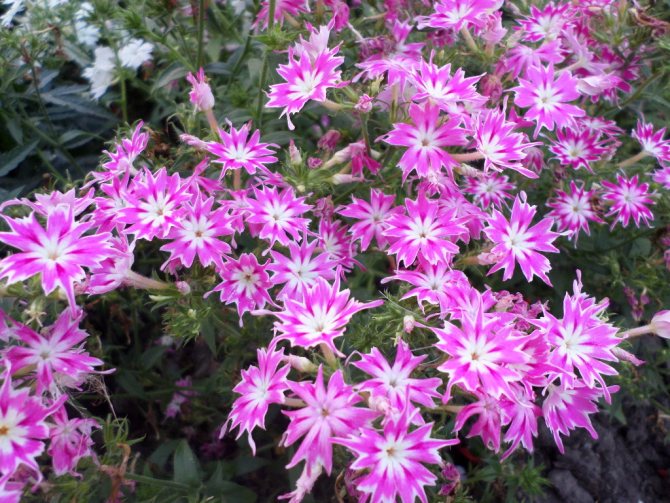Phlox drummondii, popular not only in our country, but also in Europe, acquired its name thanks to the English traveler Henry Drummond. He was the first to send flower seeds to England, collecting them on the American continent.
The phlox plant belongs to the rich family of cyanids (Polemoniaceae), in which there are more than 80 species. The name in translation means "flame", this is how in 1737 Karl Linnaeus called a bright red flower. Currently, 40 species are successfully cultivated all over the world. Most garden varieties are perennials, but not Drummond, which is an annual. As already mentioned, he hails from North America, but feels great in Russia.
The Drummond variety is an annual herb that reproduces exclusively by seed. This favorite houseplant in horticultural culture has decorative value, since it is quite easy to select. Regularly, store shelves are replenished with new interesting shades. Currently, none of the varieties has any other use, except for decorating flower beds.
Phlox Drummond
Thanks to continuous breeding work, new varieties appear every year. The sizes and shapes of flowers, their shades, as well as the dimensions of the bushes change.
On a note! Low-growing varieties are in demand, forming a dense carpet with minimal care. Tall ones are good for filling the central part of a flower bed or flower garden.
Description of Phlox Drummond
Phlox Drummond reaches a height of no more than 50 cm, stems are erect, branched, pubescent. The leaf plates are elongated, obovate, lanceolate, indented along the edges, pointed. Inflorescences corymbose or umbellate, bloom from June to October.
The color of the flowers is white, dark red, blue, lilac. Each bud falls in a week, but new ones bloom. The roots are shallow, poorly developed.

Photo of Drummond
Popular varieties of Phlox Drummond
The varieties are dwarf (no more than 20 cm), tetraploid (large flowers), stellate (fringed petals).
| Varieties | Description | Flowers |
| star Rain | Annual, stems are thin, straight, branched. Drought-resistant, tolerates frost. | Star-shaped, purple, lilac, pink. |
| Buttons | Well defined branches, suitable for southern cultivation, heat tolerant. | An eyelet is located at the base of the petal. The palette is pink, blue, scarlet. |
| Chanel | Low, up to 20 cm. | Terry, peach. |
| Constellation | Lush, up to 50 cm, with pubescent leaves and corymbose inflorescences. Popular for bouquets. | Bright red, 3 cm in diameter with a pleasant aroma. |
| Terry | Up to 30 cm, decorates loggias, balconies. | Cream, red. |
| Grandiflora | Frost-resistant, large. | 4 cm in diameter, different colors. |
| Twinkling star | Height 25 cm. Blooms until cold autumn. | Like snowflakes, with pointed edges. The color is white, pink. |
| Promise | Terry, up to 30 cm, decorates rocky hills, flower beds. | Large, blue, purple, pink. |
| Pretty woman in raspberry | Spherical bushes up to 30 cm, not afraid of cold, temperature changes. | Raspberry. |
| Tapestry | High, up to 45 cm. | In the middle, dark petals (cherry, burgundy) are light at the edges. |
| Beauty | Up to 25-30 cm. | Small, white, fragrant. |
| bird's milk | Mini-bush up to 15 cm, blooms profusely and for a long time. | Terry, cream, vanilla color. |
| Leopold | Inflorescences up to 3 cm in diameter, on a high stalk. Cold resistant. | Coral petals, white in the center. |
| Kaleidoscope | Small, decorates curbs. | Mix of different shades. |
| Alluring star | Up to 40 cm, umbellate inflorescences. | Small, fragrant, pink, crimson, purple, white. |
| Blue sky | Dwarf up to 15 cm. | Large, 3 cm in diameter, bright blue, white in the middle. |
| Blue velvet | Up to a maximum of 30 cm with pointed leaves. | Large, double, bright purple, blue. |
| Scarlett | Blooms profusely, disease resistant, up to 25 cm. | Scarlet, pink, terry. |
| Etney | Intensely branching, up to 15 cm. | Semi-double, pastel colors. |
| Vernissage | Up to 40 cm, large-flowered, looks spectacular in flowerpots, on balconies. | Large, fragrant, white, purple, red. |
| Fair mix | Up to 15-20 cm in height with corymbose inflorescences, loves sunny places. | Terry, different palette. |
| Cecilia | Branching bush, in the form of a ball up to 30 cm. | Blue, pink, blue. |
| Caramel | Up to 60 cm high, used in bouquets. | Creamy yellow, cherry in the center. |
| Ferdinand | Grows up to 45 cm with dense inflorescences. | Bright red, fragrant. |
How to collect phlox seeds
Under favorable weather conditions, the annual species of phlox blooms very abundantly and for a long time. On fragile shoots, such a large number of delicate buds are revealed that they cover all the foliage and the surface of the earth.
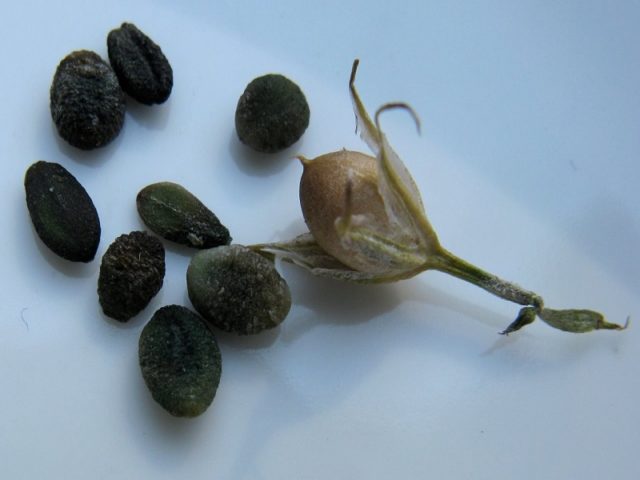

From the middle of summer, round boxes with large seeds inside begin to ripen. They are hidden in the center of the plant and therefore the annual phlox does not lose its decorative effect during this period. Seeds should be collected if the variety does not belong to hybrids and retains all its qualities when grown with this type of planting material. After collecting the capsules, drying them in the open air and cracking, the seeds are taken out. After that, the sorting and rejection of low-quality ones is carried out. Germination remains up to 4 years after harvest. The seeds are stored in paper bags or boxes, cloth bags in a dry, cool and dark place until spring, when it is time to sow annual phlox.
Growing phlox Drummond from seeds
The seeds are bought or harvested from a ripe boll. Dried, but not cracked fruits are ground, sifted through the debris.


In early May, the seed is sown in open ground, light, fertile, with a low level of acidity. If necessary, add organic matter, sand, peat. The soil surface is loosened, grooves are made, keeping a distance of 20 cm, and watered. When the water is absorbed, spread 2-3 pieces every 15 cm, sprinkle, moisten. Cover with lutrabsil, periodically raise and moisturize as needed. Two weeks after sowing, shoots will appear and the shelter is removed. The soil is loosened, weak seedlings are removed, fed with liquid nitrogen. Complex mixtures are added during the formation of flower buds. When grown from seed, it will bloom in July.
Top dressing is allowed in November, December, and phloxes will rise in April. Even if there is snow, it is cleared and seeds are scattered, sprinkled with dry soil on top, covered with spruce branches. In May, they are planted in a flower bed.
Correct landing technology
Phlox can be planted in two ways: by seeds in the ground or by seedlings grown on a windowsill. The first option saves the summer resident from the extra hassle of caring for the seedlings, but growing seedlings at home speeds up the flowering time. Already in June, young plants begin to bloom.
Features of planting seeds
If you do not have the opportunity or time to grow the plant on the windowsill, sow it with seeds directly into the ground.
The first days of May is the best time for sowing. Make shallow grooves, spill them, and wait for the moisture to absorb. Seeds are laid out in 2-3 pieces at one point, leaving a distance of 15 cm between plantings.If all 3 seeds sprout in the nest, the weak ones pinch off.
Until the moment of entry (and this lasts about two weeks), planting must be covered with lutrasil or spunbond so that moisture is kept in the soil. As soon as the sprouts have appeared, the soil is loosened, excess plants are removed and liquid nitrogen fertilization is applied. After a week, nitrogen fertilization is repeated.
When flower buds begin to form, complex fertilizers are applied (2-3 times per season). Drummond's first flowers will appear in July.


As soon as flower buds begin to form in the center of the phlox, feed the plant with a complex of fertilizers to add strength for lush flowering
In addition to spring sowing, you can plant a flower before winter, since its seeds are distinguished by good frost resistance. But there is one caveat - with prolonged thaws, the seeds may start to grow in advance, and then they will be spoiled by the returned frosts. To prevent this from happening, autumn sowing is carried out only after the last leaf has fallen from the cherry tree (this is a folk omen!). If positive temperatures accidentally return, the flower garden is covered with a non-woven material so that it does not thaw under the rays of the sun. As soon as the weather turns cold again, the shelter is removed.
Recent Entries
Rose Petal Jam and Its 7 Health Benefits You Likely Didn't Know About What Fruit Are You According to the Zodiac Sign 11 Best Grape Varieties That Will Help You Create Unique Homemade Wine
If the winter is warm in your area, it is better to sow phlox at the end of December - January. For this, in the fall, half a bucket of black soil is left in the utility room. Heavy snowfalls are expected in December so that the ground is completely hidden under the snow. They carefully trample the rows in which the plants will be sown, and poke 3-4 seeds into one nest.
Sprinkle the seeds with dry black earth, and throw a layer of snow (at least 20 cm) on top with a shovel. Under such a blanket of snow, the flowers doze until spring and begin to awaken around April.


When planting seeds directly into the ground, the first phlox flowers will bloom by the end of May, and in cold areas - after June 10
Growing seedlings
To enjoy the flowering bushes at the end of May, you will have to tinker with the seedlings:
- Seeds are planted in boxes in March (in warm areas - at the beginning of the month, in cold areas - after the 20th). Do not press the seeds into the ground, just sprinkle them with soil. So they will germinate faster.
- The container is covered with a film to maintain moisture, but ventilated daily.
- After the emergence of sprouts (on the 7-8th day), the film is removed, the boxes are placed in a well-lit place and make sure that the soil does not dry out.
- When 2 real leaves appear, phloxes dive into separate pots. Even if the plants have sprung up weakly, dive them, as it will be easier for the root system to take root in the ground later.
- As soon as the plant takes root, it is fed with nitrogen. Water the seedlings without fanaticism, in moderation, so that there are no conditions for the development of blackleg and root rot.
- In order for the plant to form a compact and lush bush, the top must be pinched. This is done after the seedlings have grown 6 leaves.
- If you plant several varieties and want them to bloom at the same time, you need to sow higher species (40-50 cm) a week earlier than undersized ones (up to 30 cm). This will even out the flowering time.
- In April, plants are hardened by exposing the pots to the street. At first for an hour or two and gradually increasing the time.
- Grown plants are planted in the ground in May, after the end of the last frost. As a rule, at this time, dwarf varieties already have time to form buds.
Flowering when planting seedlings begins at the end of May. If you remove wilted inflorescences in time and carry out regular complex fertilizing, then there will be no breaks between flowering waves. For good ventilation of the roots, loosening is carried out at least 1 time per week.
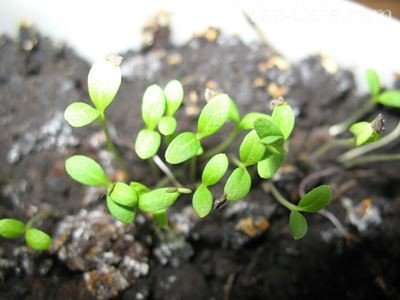

Do not expose newly hatched plants on the windowsill, otherwise the bright sun can burn young leaves and slow down development.
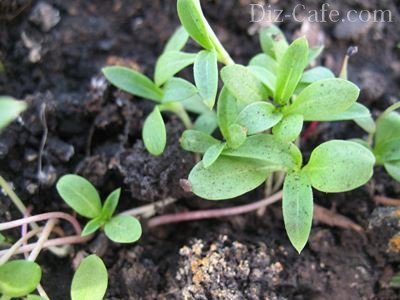

The appearance of two real leaves is a signal that phlox should be cut into separate seedling pots filled with nutritious soil
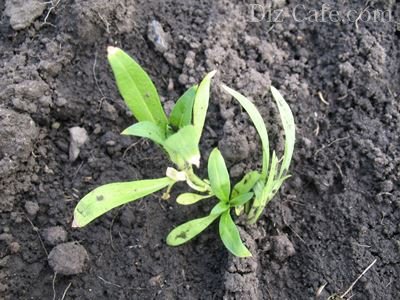

Start feeding with nitrogen fertilizers only after the plant takes root in the soil and releases several new leaves
Seedling method
When grown in seedlings in March, phlox bloom earlier. Pre-sterilized soil is poured into the boxes.
They purchase a ready-made substrate for flowering or prepare it from fertile soil or humus and sand with peat chips.
Grooves are made with a distance of 7 cm. In the moistened soil, seeds are placed one by one in a row 5 cm apart, sprinkled with a small layer, covered with glass or film. They are placed in a warm and bright room. The earth is moistened. Shoots appear in 8-10 days and the film is removed.
When two true leaves are formed, they dive, after a week they are fed with nitrogen. Watered with warm water when the soil dries. With the formation of the fifth leaf - pinch.
In April, the seedlings are hardened, taking them outside, the balcony for a period of 15 minutes, after a month - for the whole day.
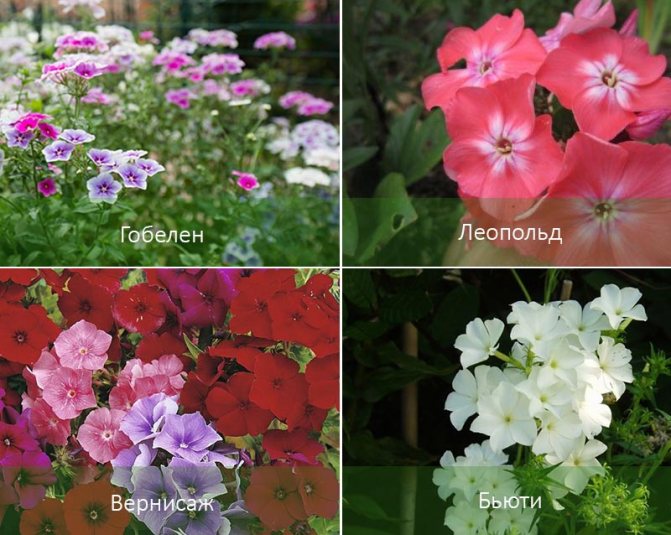

May is the time of landing in open ground. The site is chosen where there is no sun rays at noon. Holes are made according to the size of the seedling earthen clod. Water is poured, the plant is lowered, soil is poured and compacted. Then watered.
Tricks of success
Professional gardeners have their own tricks that they use when growing lush blooming phlox:
- In extreme heat, it is necessary to mulch the trunk circle, which will help to avoid overheating of the root system.
- Moldy bread is an excellent fertilizer. Its pieces are soaked for 2 hours in water and dripped near the plant.
- It is necessary to loosen the soil very carefully, since the root is located superficially and it is very easy to damage it.
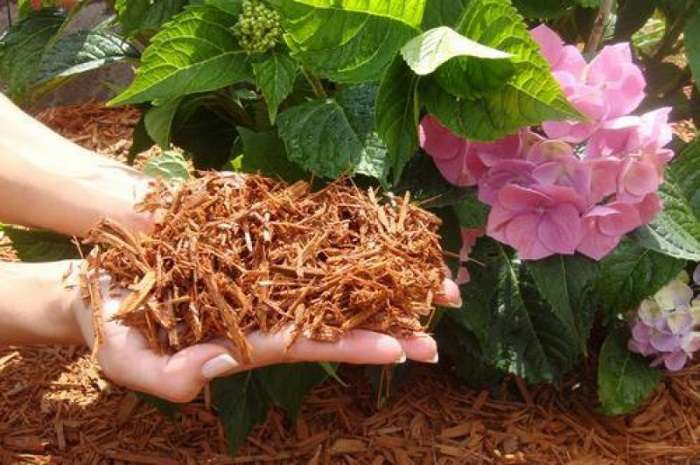



Growth success is determined by the condition of the plant. In skillful hands, phlox blooms at the beginning of summer and pleases with its grace until the first frost. Some gardeners grow the flower as a pot plant.
Outdoor care for Phlox Drummond
When planting and caring for according to the rules of agricultural technology, phlox bushes will delight you with lush flowering - this is watering, feeding and removing wilted inflorescences, weeds.
Watering
Water the plants with lukewarm water, moderately and constantly. 10 liters of water per meter. During flowering, watered more abundantly, in the heat in the morning and in the evening, avoiding contact with leaves and buds.
Top dressing
Plants require fertilization several times. At the end of May, liquid manure is introduced - 30 grams per 10 liters. Potassium salt and superphosphate are fed two weeks later. At the beginning of July, minerals and nitrogen are needed - for phlox grown by seed, and seedlings - only mineral fertilizers. At the end of July, phosphorus is added to fertilizers.
Read also Tomatoes for winter storage
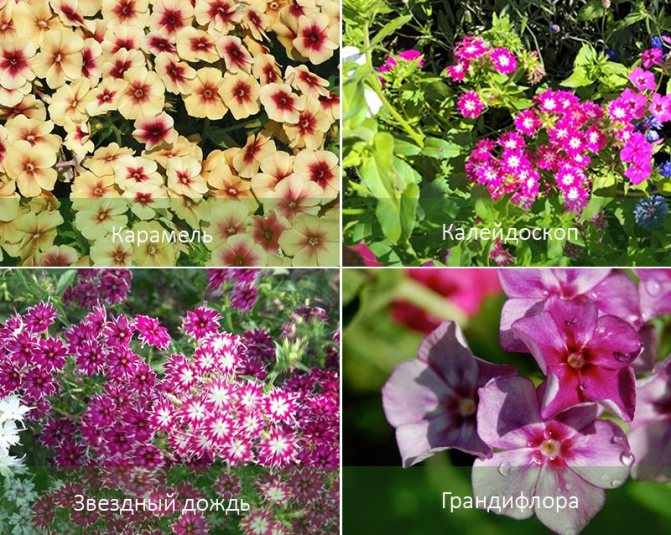

Loosening
At the beginning of flowering, they spud the soil near the bushes and loosen it until completion. This is done carefully, shallow, so as not to touch the roots. After the rain, the soil near the plants is also loosened.
Pinching
With the appearance of 5-6 leaves, the plants are pinched for better flowering.
Shelter for the winter
For the winter period, phloxes are covered with dry leaves and grass.
When to sow annual phlox seedlings
Despite the fact that the cultivation of annual species is possible by direct sowing into the ground, the seedling method is more reliable. This is due to the fact that the seeds have a very dense shell through which the sprouts cannot break through.
When sowing seeds, one should be guided by the climatic conditions of the region where annual phlox are grown.It is necessary to calculate the timing in such a way that the landing in the ground falls on a period without return frosts. So, in the South of Russia, the sowing of seeds is carried out at the end of February, in the Middle Lane - in mid-March, in the North-West region, Siberia and in the Urals - in early April. Despite the cold resistance of annual phloxes, they should be protected from temperature extremes so that the seedlings will successfully grow and develop in the open field in the future.
Reproduction of Phlox Drummond
The decorative annual reproduces in several ways.
By dividing the bush
A bush of five years old is dug up in the spring, divided, roots and eyes are left on each plot. They are seated immediately.
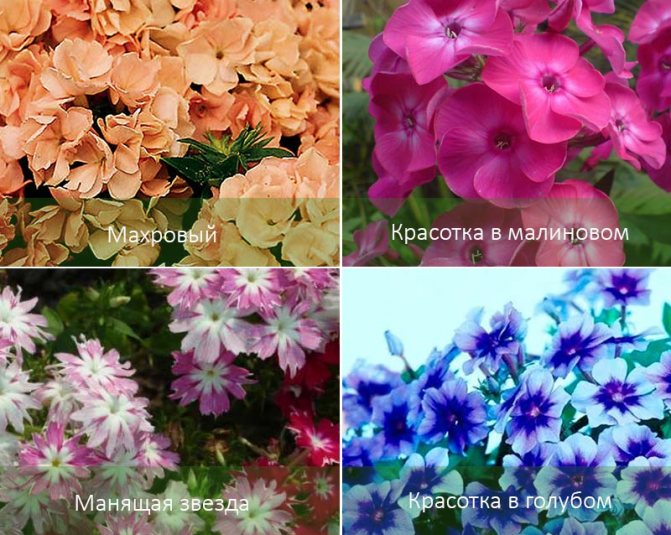

Sheet
A leaf with a part of the shoot is cut off in late June - early July. The bud is deepened into a loose, moist substrate by 2 cm and sprinkled with sand, and the leaf is left on the surface, the distance is 5 cm. Cover, creating the effect of a greenhouse with a temperature of + 19 ... + 21 ° C. Periodically moisten the soil and ventilate, cuttings take root after a month.
Cuttings from stems
Cut the stems from a healthy bush in May-June. Each part should have two side shoots. At the bottom, a cut is made immediately under the knot, at the top - 2 cm higher. The leaves are removed from below, from above they are only shortened by half. Prepared cuttings to the second shoot are deepened into the soil, sprinkled with sand, the distance is kept 5 cm. Before rooting, they are watered 2 times a day. Kept in a greenhouse. After 2-3 weeks, young shoots are formed. Then they are placed on a separate bed.
Layers
The bush is covered with fertile soil, when roots are formed and grow, the soil is cleared, the shoots are cut off and planted.
Phlox drummondii, popular not only in our country, but also in Europe, acquired its name thanks to the English traveler Henry Drummond. He was the first to send flower seeds to England, collecting them on the American continent.
The phlox plant belongs to the rich family of cyanids (Polemoniaceae), in which there are more than 80 species. The name in translation means "flame", this is how in 1737 Karl Linnaeus called a bright red flower. Currently, 40 species are successfully cultivated all over the world. Most garden varieties are perennials, but not Drummond, which is an annual. As already mentioned, he hails from North America, but feels great in Russia.
The Drummond variety is an annual herb that reproduces exclusively by seed. This favorite houseplant in horticultural culture has decorative value, since it is quite easy to select. Regularly, store shelves are replenished with new interesting shades. Currently, none of the varieties has any other use, except for decorating flower beds.
Thanks to continuous breeding work, new varieties appear every year. The sizes and shapes of flowers, their shades, as well as the dimensions of the bushes change.
On a note! Low-growing varieties are in demand, forming a dense carpet with minimal care. Tall ones are good for filling the central part of a flower bed or flower garden.
Reproduction methods
There are several ways to reproduce phlox:
- By division. In early autumn or spring, a large bush is divided into several parts. This propagation method is only suitable for seedlings that are more than five years old. Divide the root with your hands or with a shovel. Planting is carried out immediately so that the root system does not have time to dry out.
- Leafy cuttings. Summer time is suitable for reproduction in this way (end of June - July). A leaf with a bud is separated from the stem, and then planted in the ground. To root the plant, a container with cuttings is kept in a room, the air temperature in which is about 20 ° C.
- Stem cuttings. The breeding procedure is carried out in May. The shoots of the bush are divided into parts so that each of them has 2 nodes.


The material is planted in soil and transferred to a greenhouse.Within three weeks, the cuttings take root - Layers. The bush intended for reproduction is covered with earth. After a while, the stems begin to grow. They are carefully cut and transplanted to the prepared place.
Breeding of the Star Rain variety is carried out using seeds. The gardener needs to inspect the bush and find lush but yellowed caps. When the flower dries up, it is cut and put in a bag. When the seeds are fully ripe, they will fall into the same bag. The gardener will have to sort them and plant them.
Characteristic
Depending on the variety, the plant grows 30-50 cm high. The root system is superficial and very fragile. The flowers are quite small - up to 2 cm in diameter, but there are also large-flowered species. However, due to the fact that there are a lot of them in the inflorescence of the umbrella or shield type, each bush always looks very magnificent. Flowering usually lasts from June to the end of October.
The color depends on the variety. There is a color of all shades of the rainbow: yellow, purple, white, red and others. The branched bush is well leafed. The leaves are small, dark green, oval-lanceolate. On the stems they are located opposite each other.
There are three types of petals: simple, double and semi-double. Edges are round, stellate, pointed, pointed, fringed. They are even found with long tails. The color is uniform, with specks, dashes, and almost always the core of each flower is darker than the edges of the petal. The aroma is pleasant, attracts bees and other pollinators to the flower bed.
If the care is of high quality and there are enough nutrients in the soil, during the flowering period, the caps almost completely overlap the greenery. Flowering and growth are completed during frost. When the temperature drops to 0, phlox dies.
Tips and tricks from experienced summer residents
Experienced gardeners know that flowering can be extended by up to a month with the following tricks:
- At the onset of heat, mulch the flower bed with sawdust or bark to reduce the temperature in the soil.
- It is necessary to loosen the soil carefully and without deepening, since the phlox root system is superficial and easily damaged.
- These plants do not like drafts, therefore, on the north side, the flower bed should be protected by conifers or tall perennials.
- Flowers respond well to yeast feeding. If bread is moldy in the house, soak it in water (a loaf per bucket, 100 grams per liter) and let it stand for a day. Feed the plants with the prepared solution. Dig the remains of the bread into the ground.
In terms of the brightness of the color and the original shape of the flowers, Drummond's phlox is not inferior to such recognized annual beauties as petunias, salvias, asters. Just one packet of seeds will transform the flower bed beyond recognition!
Types and varieties
Although modern breeders have developed a great variety of varieties, not all are ubiquitous. Most Popular:
- Star rain - easily recognizable due to the shape of the flowers - it looks like an asterisk. Branched bushes grow to a height of 50 cm. Among the advantages is drought resistance. Very picky about lighting. There are lilac, pink and white shades, and sometimes two-tone.
- Phlox Drummond Tapestry - a mixture of several shades, forming a multi-colored carpet when sown. Differs in extreme unpretentiousness. On fertile soil and with sufficient rainfall, Phlox Tapestry does not require any maintenance.
- Promise Pink - the name speaks for itself. This variety is notable for its short stature - up to 30 cm, therefore it will be an excellent addition to rockeries or alpine slides. Pink flowers have a simple shape and a very bright shade, noticeable from afar, and also a very pleasant aroma that intensifies in the evening and at night.
Planting and leaving
Like other annuals, Drummond's phlox propagates by seed. A method other than seed is not applied. Can be planted in autumn and spring.In the fall, they choose the time when all the trees on the site have already dropped their foliage.
Important! If you sow earlier, there is a risk of seedlings emerging and their subsequent freezing. Successfully sown seeds will sprout in the spring after the soil thaws.
The right timing for planting seeds in spring helps to achieve early and abundant flowering. The air temperature should stabilize at a stable positive mark above 10 ° C. The soil can be prepared in the fall by adding a large amount of compost to it, but in the spring it is still necessary to carefully dig up and loosen the soil.
The seedling method is used when there is enough space for sowing seedlings, the summer is very short, but you want to please yourself with flowers and grow them, no matter what. In other cases, sowing in open ground gives guaranteed excellent results. The plant does not differ in demanding care, it is only important to take care of the correct preparation of the soil. Phlox loves light soils, so heavy ones are mixed with sand when digging. Loams are not suitable because they are too hot for the roots of the plant in summer, and access to moisture is difficult. It does not hurt to add a small amount of lime, the bushes respond very well to it.
Read also Top dressing for cacti at home
After irrigation, grooves are outlined in the flowerbed, along which sowing will be carried out. Their depth should not be more than 2 cm. Seeds are distributed in groups of 3 at a distance of about 15 cm from each other. After that, everything is carefully sprinkled with earth and watered from a watering can with a fine dispersed spray. When shoots appear in 2 weeks, the excess plants are removed.
Standard care is to regularly water the flower bed, remove weeds, and feed the bushes. The first feeding is carried out a week after the emergence of seedlings with liquid nitrogen fertilizer. Then, with an interval of 1.5-2 weeks, the flowerbed is watered with a solution of complex mineral fertilizer.
In order for the bush to acquire a lush branched shape, it must be formed. If you leave the seedling as it is, it will mostly stretch out in length, bloom, and dry out after wilting. A different picture is observed when pinching. If, after the appearance of 5 pairs of leaves, pinch the top, the plant will begin to branch. Each branch will expel its buds. With this approach, flowering will last several times longer. The main thing is to remove dry flowers in time so that the bush does not waste energy on ripening the seeds.
Advice! The most destructive circumstance for planting phlox is drought. This is the peculiarity of agricultural technology. If the summer in the region is not abundant in rains, and there is no opportunity to provide artificial watering, it is better to immediately refuse to plant phlox.
When the soil dries out, the plant suffers greatly. In critical cases, shedding of foliage and buds occurs. However, with artificial irrigation, it is important to observe moderation, since excess moisture leads to the appearance of various diseases. Watering is carried out when the topsoil dries up.
Timely weed removal is equally important. They are removed completely, along with the roots. Phloxes have a superficial root system that is extremely sensitive to the presence of competitors. You can loosen the soil very carefully to a minimum depth.
Do not use manure and nitrogen-containing fertilizers during watering during the summer. Excess nitrogen is harmful to the plant, as it leads to an excessive build-up of green mass. The flowers will have too little strength, they will be small and inconspicuous. The recommended amount of dressings per season is 4.
[alert color = "green" icon = "chevron-down"]On a note! To collect seeds, yellowed capsules are plucked and folded to dry. The collected seeds are laid out in paper bags, sorted by varieties and shades. [/ Alert]
How do I get my own seeds?
If you have mastered the rules of planting and caring for plants bought in stores, you can stock up on your own seeds in the fall.
What plants are suitable for propagation?
The first step is to notice in some way during flowering each variety. You can stick self-adhesive price tags on the stem, which are sold in rollers, by writing on each variety number (and indicating in a separate notebook which variety goes under which number). Some gardeners knit ribbons or threads of different colors on the stems.
It's good if at the time of planting store seeds you pay attention to the packaging information. Plants marked F1 are not suitable for future seed collection, as they are hybrids. They will never grow flowers similar to the variety from which you collected them. But as an experiment, you can plant the seeds collected from the hybrids somewhere in an inconspicuous place on the site. It happens that flowers grow with an extraordinary color or shape of petals, which do not retain the characteristics of the variety, but in themselves are quite spectacular.
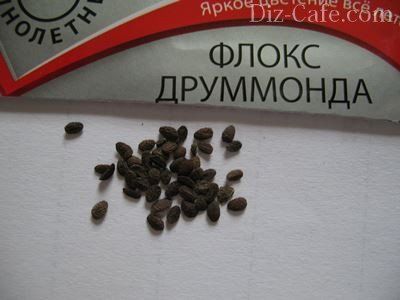

It is almost impossible to obtain high-quality seed material at home from F1 hybrids or tetraploid varieties, since the seeds do not retain the characteristics of a “parent”
Plant the bags without F1 marking separately so that you can collect seeds from these plants later. When blooming, sweep up the most lush and well-blooming phlox. They will make good seed material.
Seed Drying Rules
The seeds of the plant ripen almost all at the same time, therefore, after shedding the petals, you can cut the plant at the root and lay it for ripening in a warm room (23-25 degrees) without direct sunlight.
Choose a dry sunny day for harvesting seeds Cutting is done in the afternoon, so that the morning dew is completely dry on the petals.
Prepared flowers are laid out on sheets of newspaper, each variety separately, and left to dry. As a rule, the green mass dries completely in 3 weeks. To dry evenly, you need to mix the flowers periodically. The signal that the phlox is completely dry is a dry stem, which easily breaks in the hands.
Then proceed as follows:
- Dried inflorescences are carefully rubbed in their hands over a clean newspaper so that the seed pods fall out. In an annual, the seeds are noticeable, so you will see if they all fell out or not. You can immerse the plants in a linen bag and trample your feet.
- All large debris is removed by hand. A dry mass of leaves, seeds and dust mixed in should remain on the newspaper.
- To separate the seeds from this mass, sieves with cells of different fractions are used. First - with large ones to weed out large debris, and then - with small ones to remove dust. As a result, there will be seed on the table, mixed with garbage of the same fraction.
- You can remove the unnecessary by blowing seeds. To do this, on a windy day, spread a wide sheet on the grass and slowly pour seeds from a bowl onto it. Hold the container about one meter from the ground. The seeds fall on the sheet, and light debris will be blown away by the wind. At home, this procedure can be done using a hair dryer.
After all the above steps, the peeled seeds are scattered into paper or cloth bags, signing where which variety is, and hidden in a dry, dark place for storage.
Diseases and pests
Succulent bushes, which are very fond of watering, serve as excellent food for slugs. If grapes or cabbage grows nearby, an invasion of these pests can be expected with a high degree of probability. To protect the flower bed from slugs, sprinkle the soil with ash, tobacco dust, and fluff lime is also good. Against caterpillars, they are treated together with other crops, using the same agent as for them.
If the foliage on the phlox turns yellow and begins to crumble, the most likely reason for this is drought. Plants lack moisture.Watering must be increased, otherwise all the bushes will die.
Advice! In special cases, when the heat is too strong, and there is no rain at all, abundant spraying with water, which is carried out in the early morning or at sunset, is of great benefit.
From May to June, traces of vertical cracking of the stems can be found on individual bushes. After healing, the crack is covered with a characteristic ridge (callus). The stem itself becomes coarser, more fragile. In strong winds, such bushes can even break. The main reason for this phenomenon is the increased concentration of nitrogen in the soil, as well as too much acidity. Correct this by liming.
When infected with viral infections, the size of the flowers changes, they usually decrease. It is even possible that various ugly mutations appear. Unfortunately, there is no cure. There is only one way out - to completely destroy the affected bushes. Typical viruses inherent exclusively to phlox have not yet been identified. They are susceptible to infection from neighboring garden crops.
Fungi enter plants through microscopic wounds: cracks in the leaves, scratches on the stems. Under favorable conditions (damp and cool), the mycelium grows very quickly. This process is accompanied by the appearance of spots on the leaves, the appearance of dried out areas. For many fungal diseases, their own preparations have been developed, usually spraying with Bordeaux liquid is used as an effective measure.
By following all agrotechnical rules, you can enjoy bright flowering for a long time.
Pests and diseases
Phloxes are practically not susceptible to infectious diseases. However, pests often damage the plant.
The most dangerous insects for a flowering culture are:
- Nematoda is a 1 mm worm that settles in plant tissues and feeds on its sap. To get rid of pests, it is necessary to cut off the affected stems, and after regrowth of the shoots, break them and plant them in the ground under the film. In this case, the roots are treated with Piperazine, and the soil with Fitoverm.
- Slugs are pests that spoil the plant at night. They eat leaves, buds and cuttings. You can fight mucus with the help of coniferous needles scattered around the site.
- The scoops are caterpillars that eat all parts of the plant. Over time, phlox stops growing, begins to fade. Having found an ailment, it is necessary to collect all the caterpillars and treat the flowers with insecticides.


Spraying phlox Star Rain during the flowering period is prohibited.
This can be dangerous for pollinating insects.
I grew phlox for FIVE MONTHS, and in the end I got weed
Tu-tu-tu. I don't even know where to start. Although no, listen: in the spring of this year I successfully grew coriander on my windowsill and imagined myself to be a talented farmer of the lost modernity. For some reason, it seemed that after such a harvest in an old pot, I could even grow Chinese cacti from Aliexpress in a couple of weeks.
Nevertheless, I began to continue my activity with an easy-level and flooded to the nearest specialized store for seeds for garden flowers. The seller, after listening to my tirade about unrealistic abilities from the category: "Yes, I stick a seed in the clay and it will bloom with salmon, which will spawn next season", gave me 3 bags with flowering crops (those that are for nothing). Also, my twitching eye was warned that, they say, gigella I will not grow, but dwarf gizmos will appear.
Place of purchase - the former basement of the house number - the city of Ulyanovsk.
Price - 18 rubles.
Number of seeds in one pack - 40 pieces.
By the way, the next paragraph will be devoted to the moderators (I, colleagues, just want to make your difficult work a little easier and indicate the real name of the garbage that we are talking about now). In general, you know what the matter is. These shoots, although they do not look very presentable, but the name has more than impressive and inspiring confidence.So, I took not just a puff on a stick, but phlox Drummond (this is not obscene) TAPEthat were supposed to open up with myriads of stars and delight their breadwinner for many years.
Read also Do-it-yourself bicycle souvenir


Seeds from domestic agro, which, by the way, are scolded by many for poor harvest and rotten / empty seeds, are packaged in sachet bagscovered with some kind of glossy film. It really protects the residents of the cardboard communal apartment from external influences and potential pests. Also (please note) there was one more tiny additional compartment inside for additional safety net.


The seeds of these very phloxes (like miniature spheres) odorless. Diameter one unit does not exceed 0.5 mm. You can't even pick them up on tweezers (and I still avoid such painstaking work with dubious results in every possible way). Nevertheless, they looked like the pictures that I found in a search engine, and therefore, there was no suspicion about their landing period in March.


On the back of the packaging, the manufacturer has prudently printed illustrative illustrations of sowing. I was also pleased with the remark that flowers.
It's just that I kind of doubted the correctness of my thoughts before, because, you see, I thought that after the seed, a full-fledged flower garden dives to the surface, but this is how it happens. Due to the fact that the Chukchi are not particularly fumbling about assembling land for plants, another page from the World Search Engine was called to help. Eventually, I scattered the tapestry on 80% of the purchased soil with 20% additives from store moss and expanded clay.


The whole thing was stirred up in a chaotic manner and packed into a plastic container. The seeds themselves were also scattered as carefully as possible on the proposed territory and covered with earth (the height of which was 1.5 centimeters). I pulled torn cellophane over the structure and prepared to wait (water was also present in this story).
When other flowers began to rise from the toothpicks behind the neighboring fences, I became nervous. For unstable germination of my phlox took 3.5 weeks... Only then did the strong knees of plants emerge from the ground and prepared to stretch out. All this time, I persistently sprayed them from a spray bottle (5 times a week) and carefully wrapped them up with a stub of a bag.
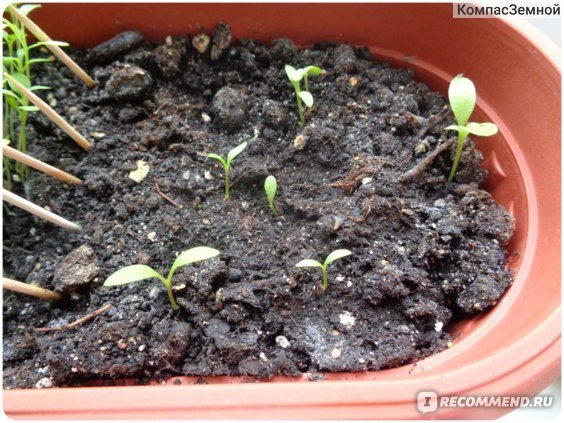

In the end of April the flowers deigned to come out completely. However, from 40 seeds hatched only 9 (two of which my cat bit later). They turned out to be fleshy, tenacious and straight home-grown titans. 6-7 leaves formed on one stem, which in length did not exceed 4.5 cm. However, the space on the windowsill was not enough for them and they stupidly sniffed into the window glass and pushed powerlessly. Thus passed the second month of spring and May.


After 4 months of ordeals, I pretty much gave up on my farm and irrigated cleanly on the machine (thereby providing humanitarian assistance). Meanwhile, the phlox turned into a long, florid freak who stopped growing and was clearly preparing for motherhood (well, or whatever is brewing there). So, a week ago, in my next trip to the balcony, I noticed small hairy inflorescences, which did not resemble new leaves, but looked more like coveted buds).


They (buts) did not keep themselves waiting long and already July 17th this year have turned into clearly visible cones with a clever layering. So, one branch promised to give something purple, but the second. also purple. Moreover, on the sides of the stem, new shoots began to be tied with clear signs of a future riot of colors (I did not mind at all). And yes, the heat that is now observed outside the window (30 degrees above zero) has never affected the state of the phloxic. They, as if, do not care about her (this is also a plus).
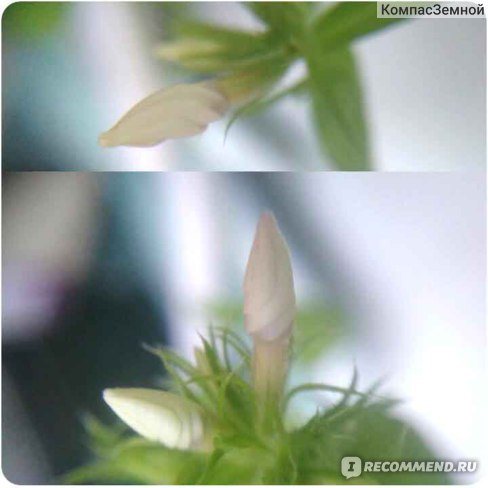

After another 3 days tiny geometric figures blossomed and turned. into bullshit.And on the one hand, I'm glad that at least something came out, but on the other hand, you must agree that the dandelion blooms more effectively than this semblance of a weed.
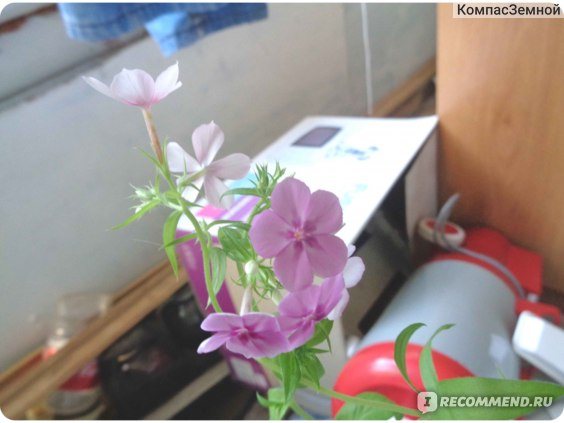

Also, I am haunted by the piccha declared by the manufacturer, on which luxurious gradients are visible, but in fact, a watercolor smear is obtained with a poor-quality brush (also the germination rate is 25%). As a result, all my (what no, but works) simply sunk into oblivion, which were replaced by complete indignation and lack of understanding of the situation. I wanted to organize a bright flower garden on the balcony, but I got green bushes (you can't even attribute them to vegetable oil. Solid margarine for 15 rubles a pack).
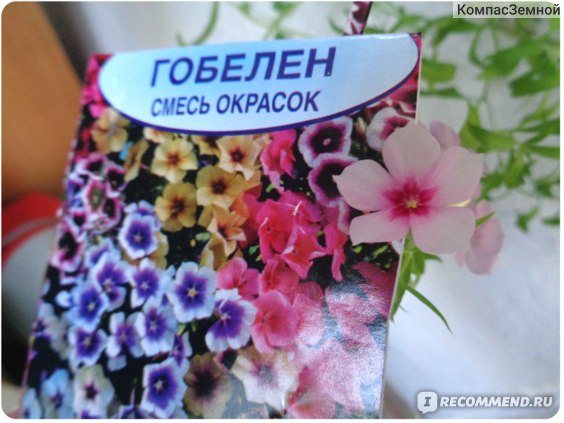

I do not recommend... Thank you for attention.
«>
Planting phlox seeds for seedlings
Growing seedlings of annual phloxes allows them to bloom earlier and longer than when sown in the ground. They start sowing seeds after the day and the amount of sunshine increase. Otherwise, for seedlings of annual phlox, artificial lighting will have to be installed above the boxes.
Before sowing, you must:
- Prepare seeds.
- Prepare containers for plants.
- Purchase soil for seedlings.
- Fill containers with them.
- Sow seeds.
- Provide flowers with the necessary care.
Seed preparation
Growing healthy seedlings of annual phlox depends on proper seed preparation. Among agrotechnical methods they use:
- disinfection - in order to remove pathogenic bacteria from the surface of the seeds, for which it is necessary to keep them for 30 minutes in a weak solution of potassium permanganate;
- rinsing and light drying;
- stimulation - to accelerate the emergence of seedlings, the seed is dipped into a solution of Epin, Zircon, Agate;
- soaking - placing in a thermos with warm water for a day so that the thick-walled seeds of annual phlox have more friendly shoots.
Important! If the seedlings are periodically infected with a black leg, then the seeds should be treated with a fungicide.
Soil preparation
For the successful cultivation of annual phloxes, it is necessary to prepare the soil. Seedlings require a light, breathable, loose soil mixture. It can be purchased at a specialty store or it can be composed of several ingredients:
- sand - 1 part;
- perlite - ½ part;
- peat - 1 part;
- humus -1 part.
Important! Before sowing, it is necessary to disinfect the soil mixture in one of the following ways:
- freezing - finding the soil in frost (about -15 ⁰С) for 5 days with repeated freezing after thawing;
- calcination - warming up moist soil in the oven at a temperature of 80 ;C for 30 minutes;
- steaming - keeping the soil for 1.5 hours over boiling water;
- etching - treatment of the soil mixture with special preparations (Glyokladin, Extrasol), according to the instructions.
Important! After disinfection, sterile soil should be populated with useful microflora, for which Fitosporin-M is ideal.
Choice of capacity
Growing seedlings of annual phloxes involves the use of containers of different types, volumes, materials of manufacture.
Plastic or wooden boxes are convenient because all the plants are in one place, they are easy to transport, turn to the sun with the right side. The disadvantage is that by the time of planting, the roots are intertwined, and the transplant will certainly injure the root system.
Trays and cassettes as containers are lightweight, compact, durable. Growing in them is convenient. Since the volume of the containers is small, this can lead to rapid drying out of the soil.
Planting annual phlox seeds in peat tablets is very convenient. They are easy to use; when planted in the ground, the plants do not get damaged. The disadvantage is the high cost of tablets, the need for constant moisture due to the small volume and rapid drying of the substrate.
Pots are most commonly used by gardeners.Convenient for growing containers of cylindrical shapes, since it is easier to get seedlings from them with a lump of earth than from square ones.
Important! Any container should have a drainage hole in the bottom so that water does not stagnate and the root system does not rot.
Peat pots can be considered an ideal container. Their volume is sufficient for growing plants, the material is environmentally friendly, the roots are not damaged during transplantation.
Sowing scheme
It is worth planting annual phlox seedlings according to the following scheme:
- Fill the prepared containers with soil so that at least 2 cm remains to the edge.
- Spill the soil mixture with warm water.
- Spread the seeds of annual phlox over the soil surface, pressing a little into it.
- Cover containers with plastic wrap.
- Maintain the indoor temperature for growing at about +23 23С.
Important! The seeds of annual phlox should not be covered with soil, since they can only germinate in the light.
Morphology
The structure of such plants has indicators common to all varieties:
- Root - forms many branched appendages, strong, superficial.
- Stems are erect, sticky and branched, covered with small sparse hairs.
- The leaves are alternate, their shape is elongated-oval or lanceolate, have sharp ends, the upper leaves are adjacent to the stem.
- The brushes are wide and dense, the perianth has a 5-lobe limb, turning into a tapering tube.
- Drummond phlox flowers are bright, small in size, up to 4 cm in diameter, have a monochrome color of different colors, or a combination of 2-3 shades.
- The fruit is a small oval capsule.
Drummond phlox bloom lasts a long time, starting in May, and until the onset of a serious cold snap in October. The varietal features of phlox may differ slightly in the shape of the leaves, the size, structure and color of the petals, the timing of the beginning and continuation of flowering.
Phlox are annual. Landing
Step 1. Choosing a place for planting annual phlox
In order to see the most beautiful flowering of phloxes, take the choice of a landing site quite seriously. The duration and brightness of flowering of annual phloxes will depend on this. Study the following guidelines for choosing a planting site for annual phlox:
- annual phlox are drought-tolerant and light-loving plants. But from direct exposure to sunlight, the phlox root system will overheat. The brightness of the flowers will quickly fade, and the bloom itself will not last long. The ideal landing site is partial shade;
- it is phlox grown in partial shade, under a spreading crown of trees that lets the sun's rays through, will show you the maximum brightness of colors;
- choose a place for planting phloxes away from plants with a highly developed root system;
- if you plant phlox in a shady place, then get ready for the fact that the flowering will not be bright, but it will be very long;
- choose a fairly high spot for planting annual phlox, in the shade of fruit trees, for example.
Step 2. Prepare the soil for planting annual phlox
Annual phloxes are one of the most unpretentious plants in the composition of the soil. If you make absolutely no effort to improve the soil, the phlox will simply not bloom as brightly. If you want to achieve maximum decorativeness, then follow the following rules for preparing the soil for planting phlox:
- annual phloxes negatively relate to heavy and clay soils. If the soil on your site is just such, then add a certain amount of sand under the digging to make the soil looser and lighter;
- too light soil is also not suitable for phlox. In hot weather, it overheats very quickly, which will harm the root system of plants;
- annual phloxes negatively relate to soils with an increased level of acidity. Gardeners usually carry out liming of the soil;
- the optimal soil for annual phlox will be soil with an admixture of humus, soil with good drainage;
- if the soil on your site is poor and has a low level of fertility, then you can apply organic fertilizers and peat for digging.
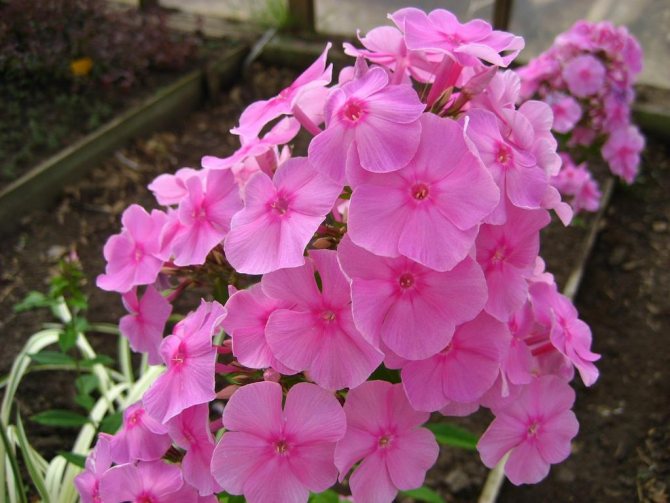

Step 3. Planting seedlings of annual phlox in open ground
The place for planting phlox annuals has been chosen, the soil is prepared, which means that you can start planting phlox seedlings in open ground. Of course, if the weather conditions already allow it. So, we plant annual phlox:
- for planting phlox seedlings in open ground, it is better to choose the evening time;
- the soil must be well dug up and prepared;
- dig small holes so that the root system of the seedling fits there;
- the minimum distance between young plants is 20 cm;
- if the varieties are tall, then the distance between young seedlings should be increased when planting;
- put a plant in a hole with an approximate depth of 20 cm, cover it with earth, slightly compact. The root collar should be recessed so that the plant does not get burned by the sun;
- do not forget to water phlox with water at room temperature;
- it is better to mulch the soil surface around the plants after watering.
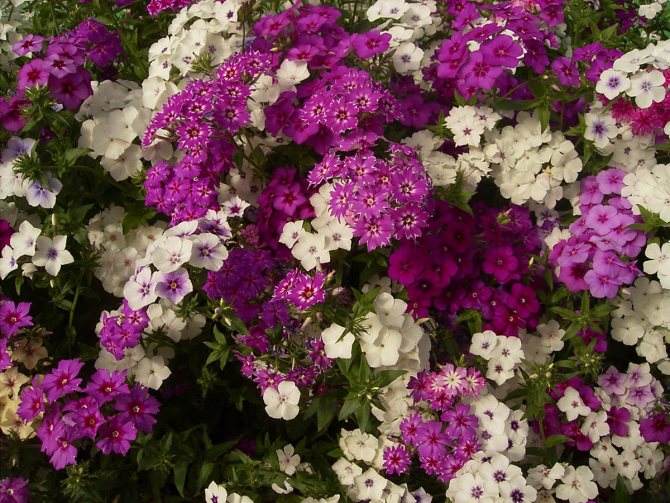

Seed cultivation technologies in soil
When grown by seeds and seedlings, the first option is preferable. It saves you the trouble of growing seedlings. But it is available only to residents of the southern regions. In the middle lane and the northern part, it is necessary to sow seeds for seedlings and grow them on a windowsill. Only then the seedlings go to take a place in the flower bed.
Sowing seeds in the ground step by step
Early May: the site has been selected, the soil has been prepared. You can start sowing. Seeds can be either purchased or your own. They do not need pre-sowing preparation.
Step 1


Loosen the surface of the flower bed, leaving no earth lumps. The soil must be uniform.
Step 2
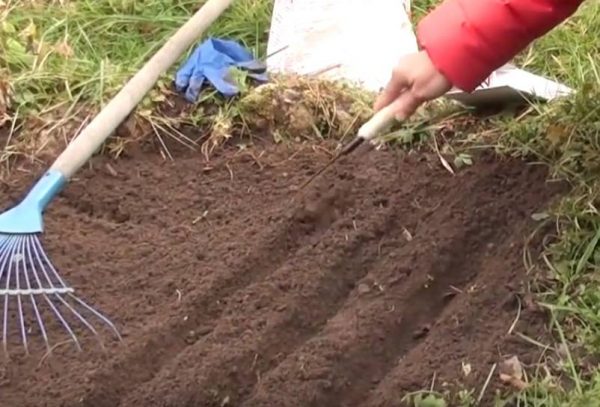

Make grooves at least 20 cm apart (solid fit). Water them and wait until all the moisture is absorbed into the soil layer.
Step 3
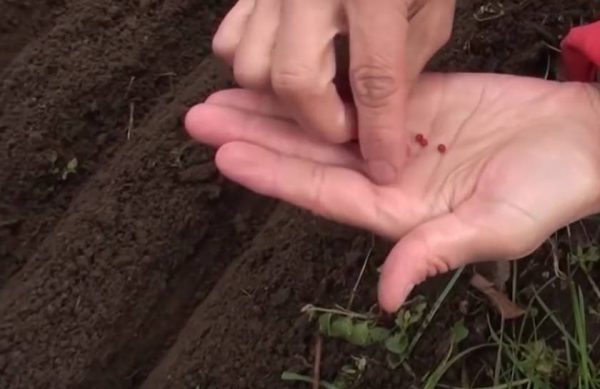

Mark the mini-holes in the grooves at a distance of 15-20 cm. It is better to read about the planting distance on the seed bag or familiarize yourself with the characteristics of the variety.
Step 4
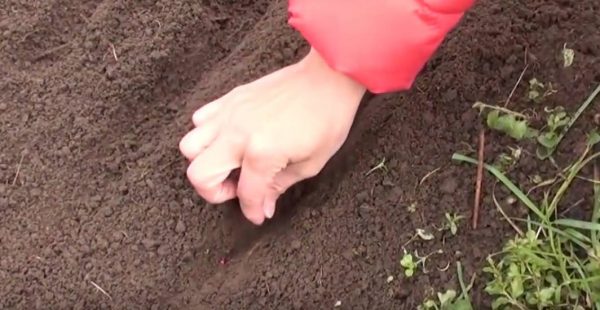

Place three seeds in each mini-hole. When they sprout, the two weakest shoots will need to be removed by pinching. There will be one left, which will form the bush.
Step 5


The crops are covered with soil, which is carefully moistened. From above, everything must be covered with lutrasil.
Step 6
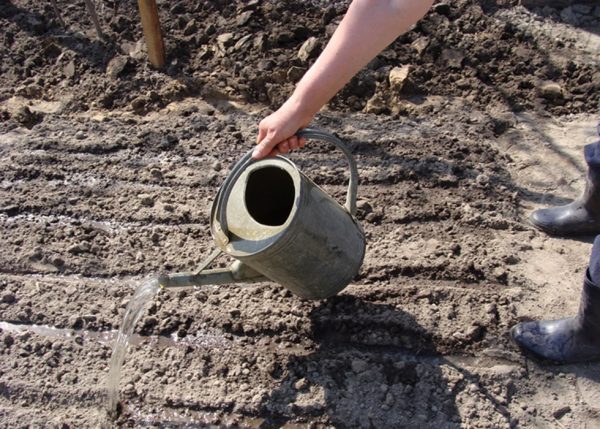

Within two weeks, until shoots appear, the lutrasil should be lifted and the soil moisture controlled. If it is not enough, you need to water.
Step 7
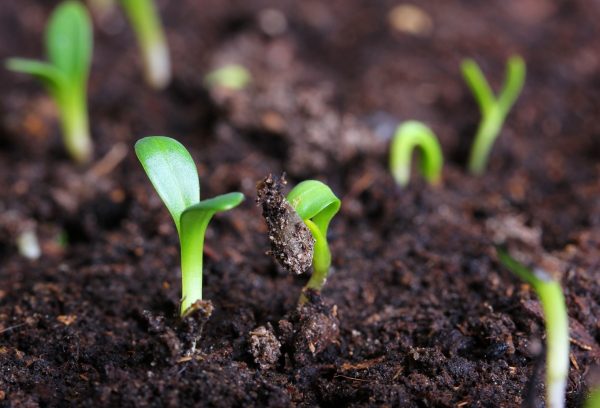

As soon as the first shoots appear, it is necessary to remove the covering material. Then you should carefully loosen the soil around them.
Step 8
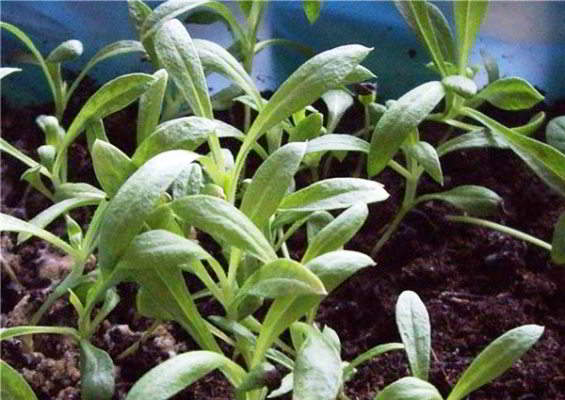

After a week, excess plants are removed, loosening, watering is carried out. Seedlings are fertilized with liquid nitrogen fertilization.
Step 9
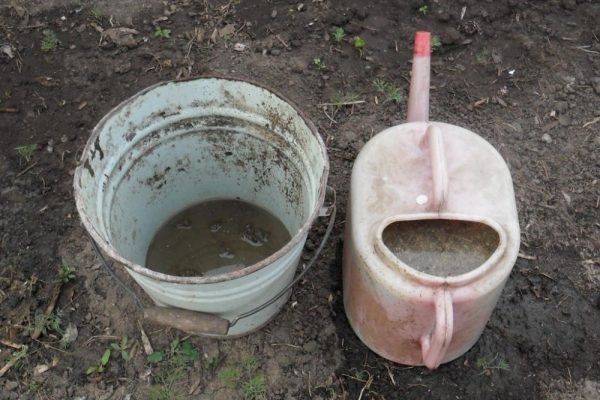

Nitrogen feeding is repeated after a week. Watering is carried out as the soil loses moisture.
Step 10
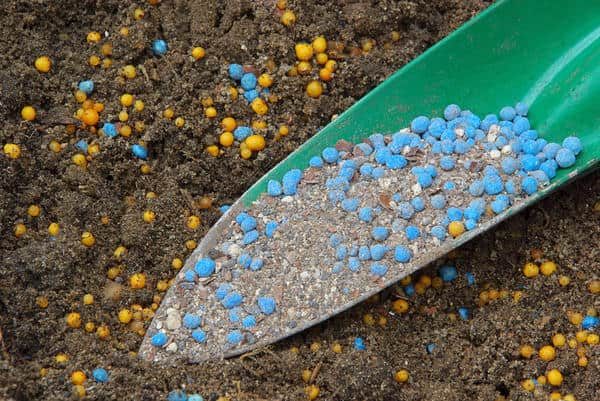

Complex fertilizers are applied for the first time since the beginning of the formation of flower buds by the plant and repeated three more times throughout the season.
Covering material prices
covering material
Features of sowing in winter
The cold-hardy phlox annual can be sown before winter. In warm winters, even sowing at the end of December is allowed. In the middle lane, seeds are laid on a flower bed in November, when the ground is not frozen yet, but the cold has already settled.
Important! If phlox is sown too early, the seeds will sprout in the fall warming. Then, when the frost hits, the seedlings will die.
Experienced gardeners have a sign - to sow Drummond in the winter, when the last yellow leaf falls from the cherry tree. If there are cherry trees on the plot, you can check it.
In any case, in case of early sowing and unexpected return of heat, it is recommended to cover the flower bed with protective material. He will not allow the earth to warm up in the sun, and the seeds to germinate. When the threat of heat is over, the cover can be removed and the soil is left open until it is covered with snow.


Flowerbed with phlox
- With warm winters in the southern regions, it is recommended to stock up on a couple of buckets of black soil by the end of the year.
- Then wait for the December snowfalls so that all the soil is covered with snow.
- On a flower bed, snow must be trampled.
- Make grooves in it and sow three seeds in one place, as in soil sowing.
- Fill the grooves with black soil.
- Throw on top with a thick layer of snow, about twenty centimeters.
- In April, the plants will begin to sprout.
Care during cultivation
Care for the grown seedlings has its own characteristics. We have already said something, but now we will consider all the nuances more closely. In fact, there is nothing complicated here, and the main thing is to remember the basic rules of this process and clearly follow them. These include the following:
- boxes with seedlings should be in the most luminous place so that the plants do not stretch in height and do not lose their attractiveness;
- optimal temperature conditions of detention will be values in the range of + 18 ... + 21 ° C;
- in the first days after planting, containers with seeds should be closed from the scorching sun rays, covering them with newspaper or dark film;
- watering should be carried out as the top layer of the soil dries up to prevent the formation of a serious crust;
- every week, seedlings must be fed with organic and complex fertilizers, alternating them with each other;
- as soon as the plants have their own sixth leaf, pinch the top, because this way you will get a more compact bush with lush volumes;
- starting in April, it is useful to harden young plants by taking boxes with them to the balcony or garden and leaving them there for several hours;
- planting seedlings in open ground should be carried out no earlier than mid-May, and before that they are fed twice with mineral compounds.
Learn more about the secrets to successfully growing phlox in your garden.
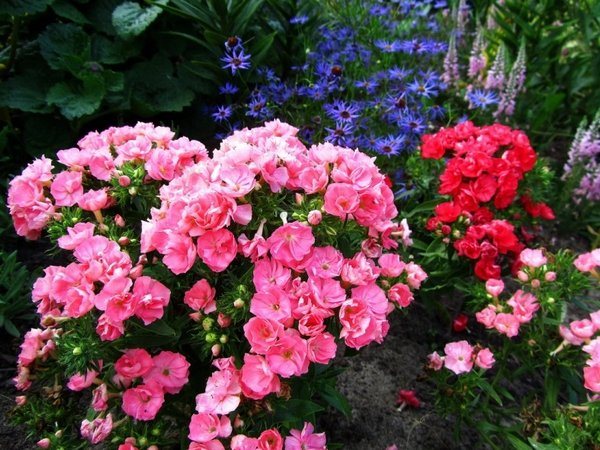

In the future, after planting in open ground, Drummond phloxes will also need appropriate care. At a minimum, they will need to regularly add fluid to the soil, carefully loosen it and remove wilted flowers in a timely manner. Nevertheless, in order for the decorativeness of the plant to remain at the same high level, delighting you with its brightness for a long time, do not forget about the continuation of the introduction of nutrient compositions (complex fertilizers), about once every two to three weeks. As the practical experience of many gardeners shows, without such dressing, the flowering period of Drummond phlox will be significantly reduced, while fertilization, even after the complete cessation of flowering, activates a new wave after two weeks.
Important! If you do not stop the growth of the plant (for example, by pinching the top), then it will be possible to wait for flowering only two months after sowing the seeds.
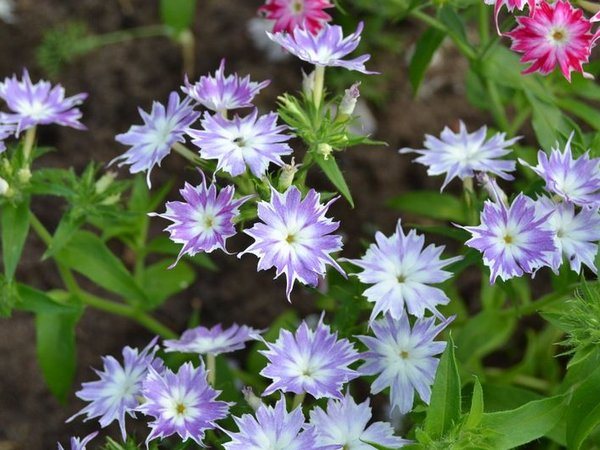

Botanical description of the flower
The numerous colors and types of phlox make one or more preferred, but not all at once. The most common is Drummond's phlox.
An annual variety that thrives on territories with different climatic conditions.
The height of the flower is determined by the variety, but the color of the petals varies from light pink to dark purple.
Phlox can be a tall crop as well as a cultivator to create unique combinations for your garden design. Aroma: sweet,
strong.
The flower is star-shaped or wheel-shaped. But in any case, it forms a large inflorescence. Flowering is abundant and long-lasting throughout the summer, covering September-October.
To determine the choice of phlox variety, it is worthwhile to study in detail each species with its features and characteristics.
Annual phlox - not everyone knows them
It would seem that phlox for our country are ordinary flowers, well, who will you surprise with them? Is that a beginner in country affairs. I sowed these flowers and forgot, they grow from year to year, bloom throughout the summer and even in the fall. The bushes are usually tall, often strongly disintegrate to the sides, therefore a garter is needed. Agree, phloxes are beautiful, but decorating a rock garden, rockery, garden path with them is difficult. To plant at the fence is yes.
Phlox "Drummond" is better called a species, since it has many varieties, we will introduce you to them. They were opened by Henry Drummond, who was a traveler from Foggy Albion. He sent the seeds of beautiful flowers to Europe from the USA.
The beauty of the species is that it is undersized - yes, it is believed that the bushes grow up to half a meter, but in fact summer residents say that phlox are about 30 cm tall. Well, the variety also plays an important role here. Phloxes have flowers 2-3 cm in diameter, which, in turn, are collected in shields and umbrellas, which is why they seem to be large caps. Drummond phlox bloom lasts all summer and until the most severe frosts. As you understand, varieties can be used to decorate a rock garden, curbs, planted in containers on verandas, along water bodies.
This has its advantages:
- phlox "Drummond" have a wide variety of varieties that can beautify any landscape;
- flowers are not afraid of frosts down to -5-7 degrees;
- if you are tired of flower beds with phlox, you want to remake them, then it is much easier to do with annuals than with perennials;
- the view of "Drummond" is not afraid of the bright scorching sun, the flowers do not lose their decorative effect all season;
- unpretentious plants;
- there is an opportunity to receive seeds every year, which is beneficial.
On a note! When you plan to plant flowers, grasses and other plants in the garden, remember that varieties and types of tall are planted first, then medium, low and ground cover.
Phlox "Drummond" can really decorate your garden, it is easy to grow them even from the very first stage - seedlings. Further, you will get acquainted with the best representatives of the species and the agricultural technology of flowers.
About seeds
- Drummond's phlox reproduces by self-seeding;
- Fruits - a box, in the nest - up to 3 seeds. It takes only 0.5 grams of seed to grow a hundred plants;
- Seeds do not lose their germination within 1-3 years;
- Semen collection must be done from luxurious, healthy phlox;
- Pay attention to purchased seed material. Is there an F1 stamp (hybrids) on the packaging. Having sown them once, and subsequently collected testes are of little use, and almost do not retain the properties of the "parent";
- If you like to experiment, harvest seeds from the finest plants. You can get unexpected results - rich color, amazing shape. These flower specimens will not retain the results of the variety, and can amaze with their showiness.
Arrangement of continuous flowering floxarium
To begin with, we correctly select the sequence of flowering plants. Then, based on the varieties - color, saturation and shades. Type, size of flowers, height of plants.
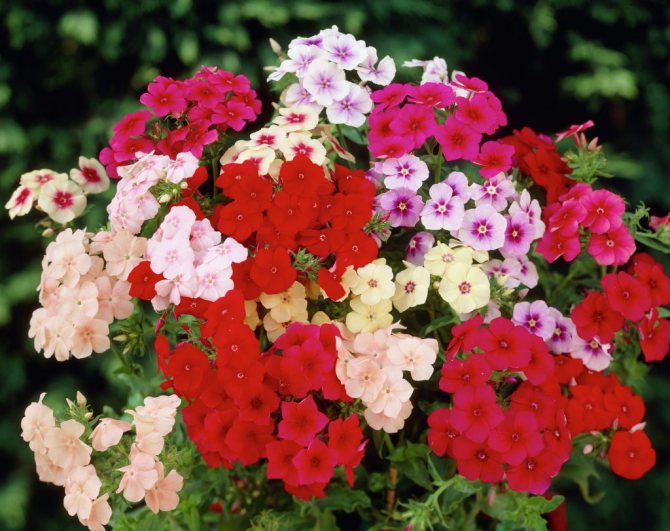

It should be remembered that caring for perennial and annual phloxes (see photo) is almost the same.
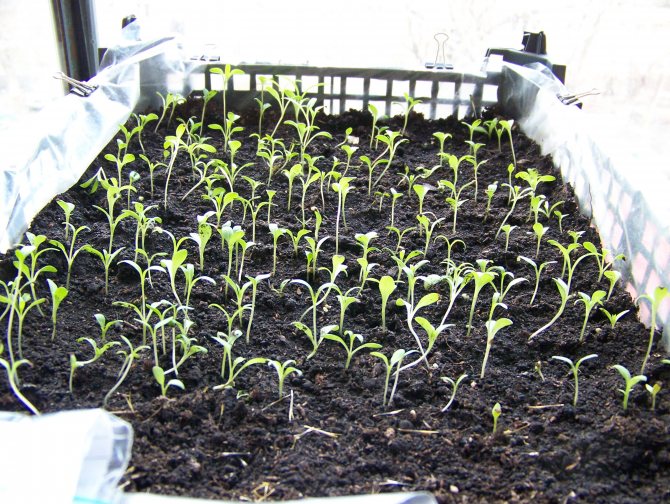

Phloxes look strictly against the background of straight lines. Modular planting in combination with perennial grasses and shrubs is good. Harmonize with paths. Planting phlox on the lawn will change your garden beyond recognition. Drummond's phlox is irreplaceable here, and especially good.
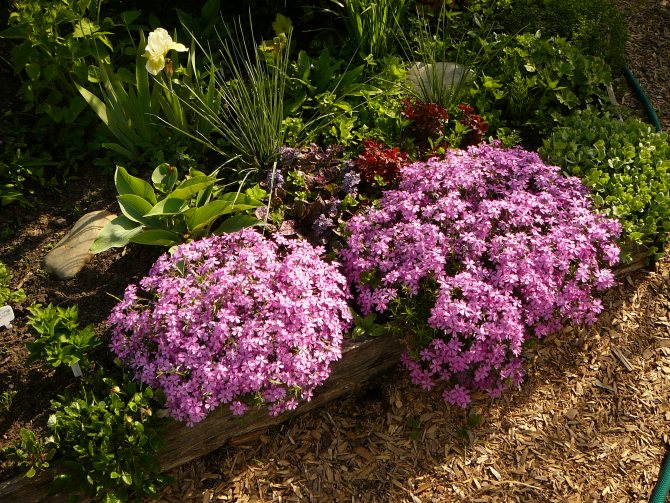

Avenues of phlox are beautiful - plants are planted along paths and paths, at equal intervals.
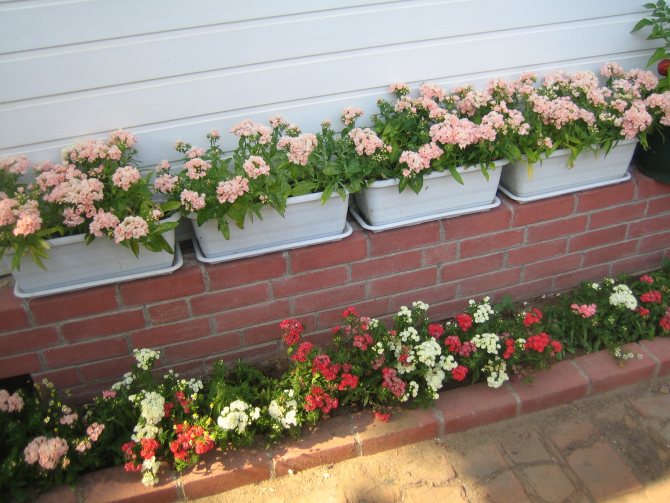

Phlox hedge. Picturesque. It is able to hide from prying eyes those areas that are tall that you would like to make less noticeable (utility yard, toilet, etc.). A hedge is made up of 4-5 rows of plants.
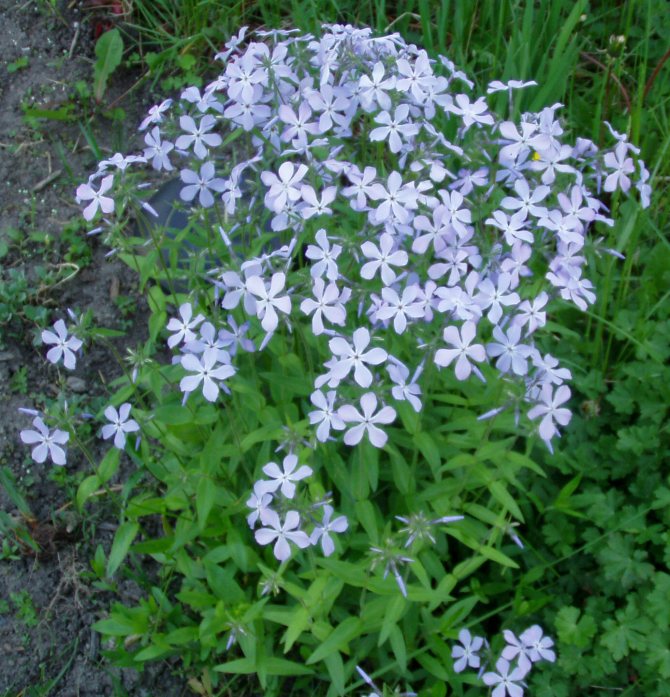

The random landing sites of carpet phlox look catchy and intriguing. And it is better to choose areas that are visible from a certain point in the garden.


Taking proper care of your perennial and annual phlox is the first step to making your garden unforgettable!
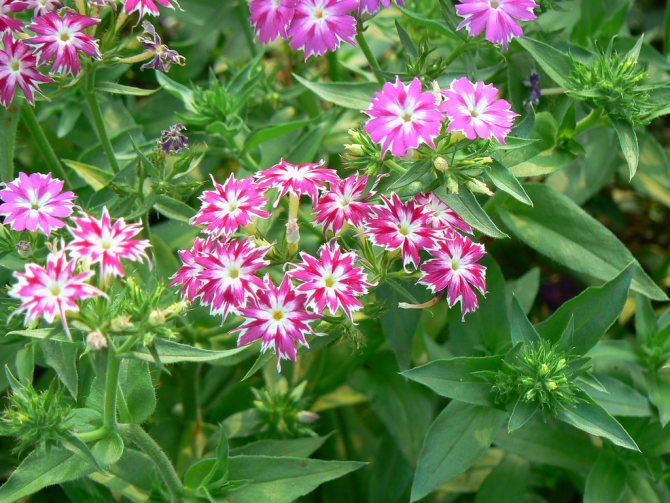

Phlox is annual. Photo
When phlox is planted. How to plant phlox in spring using rhizomes
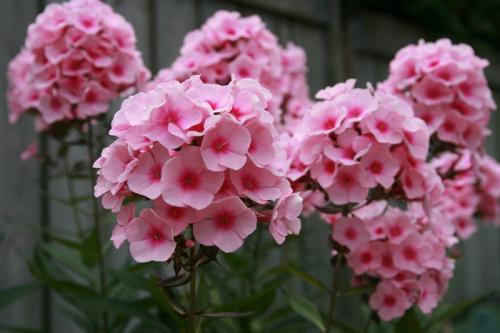

Phlox are one of the favorite flowers of florists. They can be found in gardens, city flower beds, alpine hills. Growing them is easy compared to other plant species. Planting phlox with rhizomes in the spring consists in choosing the right planting material, caring for the plant and fighting pests.
How to choose planting material
The success of growing any plant depends on the choice of a seedling. Preference should be given to pure varieties that are not infected with pests and bacteria.
Advice! If in doubt whether the seedling is healthy or not, it must be planted in a quarantine area.
When choosing planting material, it is better to plant domestic varieties. They are younger and healthier, adapted for growing in the climatic conditions of Russia. Before purchasing, it is necessary to take into account the color of the inflorescence, the height of the bush, the period and duration of flowering. Usually, the division of phlox begins in autumn, two or three large stems are cut off, up to 10 centimeters high. The roots are about 15 cm long, if they are shortened longer. The seedling must have a label with a description of the variety. Storage of purchased seedlings before planting in spring is in a cool place. After disembarking in the country, cover with agril. Spring planting stock has four or five healthy stems. Shoots on a plant up to 5 cm.
In specialty stores, phloxes are sold in containers filled with sawdust and peat. Protects the root system from drying out. You should not buy seedlings in bags, they dry out quickly, the buds break off and are very weak.
Important! High-quality planting material can be obtained by grafting in the second year after planting.
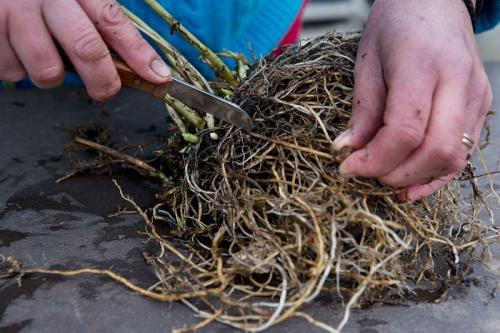

Reproduction by roots
Many novice flower growers are wondering when to plant phlox in open ground in spring or autumn, or maybe summer.
Root propagation of early varieties is best done in the last weeks of summer. Later species are planted in mid-September, before the onset of frost, so that the roots have time to take root. Planted phloxes in autumn quickly acclimatize to new conditions; lush flowering can be expected in spring.
Planting and transplanting in the spring to another place begins as soon as the snow melts. After the shoots have grown ten centimeters, they are planted in the ground. Planting seedlings in an open area in spring delays flowering by 14 days and reduces flowering time.
In order for phlox to please with abundant flowering, a number of rules must be observed:
- Choosing a place. Phloxes love a temperate, warm climate; in the wild, they are found in eastern America and Canada. Growing up, they occupy vast areas in river valleys and at the foot of the mountains. They love sunny and partial shade areas, as well as well-moisturized soil. Preferably with a slight slope, so the water will not stagnate.
Advice! It is worth bypassing the northern fate, not planting phlox in the shade of conifers.
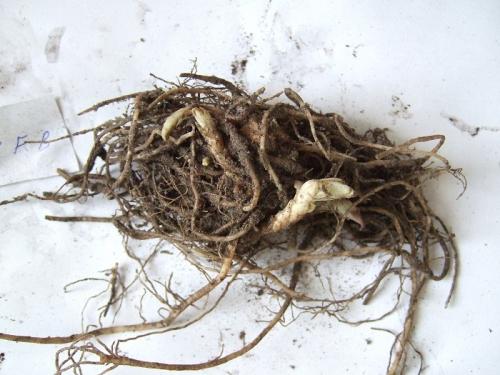

- The plant prefers light, nutritious, loose soil.
- It is not difficult to care for phlox: removing weeds, applying fertilizers. Spring care consists in regular watering, because during this period the flower lacks moisture, and is more susceptible to various infections and fungal viruses. Care after winter consists of fertilizing the soil, pruning dry branches.
- Groundbait is necessary for the density of the inflorescence, color saturation, growth of leaves and stems, and the development of the root system. Fertilizing phlox is in three stages: the first - in early spring (nitrogen mineral complexes); feed for lush flowering should be in May (potassium salts); the third stage is before the seeds ripen (phosphates).
- Preparation for wintering consists in cutting off the branches, destroying the stems, and various pests and diseases may remain on them. In an area where winters have little snow, cutting off ground branches is not worth it.
Once the site has been chosen, the perennials are planted in a hole that is larger than the root system. Fertilizer is poured onto the bottom, mixing with the main soil, and poured with water. The roots are spread over the entire area of the hole. After the flower is poured and watered. Phloxes should be fed with mineral and organic fertilizers. Bushes are planted at a distance of 3 to 40 cm. 5-6 bushes can be planted at once per square meter.
Important! On plots, with properly organized planting, phloxes retain their decorative properties for seven years.
How to plant with seeds
Planting seeds is possible, but it is a rather laborious and time-consuming process. Collect planting material from the most beautiful and lush inflorescences. Brown seed box indicates that the planting material is ready to be harvested. You can plant seeds as soon as in open ground, or in a special container. The best time for planting is autumn. Soil, humus and sand are poured into the boxes, seed is scattered on top and covered with soil 1.5 centimeters. In early April, the plant must be planted on the site.


Watering and mulching
The root system of phlox is located superficially relative to the soil. As a result, it is worth regularly watering and loosening the soil. Perennial phlox are very fond of moisture, drying out of the earth can lead to the death of the plant. A bucket of water is used per square meter for irrigation.
Important! To make moisturizing more beneficial, add 3 grams of boric acid or a couple of drops of potassium permanganate to a bucket of liquid. The bush will not only be saturated with moisture, but also receive mineral fertilizers.
In preparation for winter, mulching is carried out immediately after the introduction of the autumn bait. The material is humus, peat or manure. Most gardeners advise using horse manure as it keeps you warm. If mulching was carried out with peat, then it is better to cover it with dry foliage or branches. As soon as the snow melts, the shelters are removed.
Important! It is not recommended to cover phlox with a film for the winter, this provokes rotting of the roots.
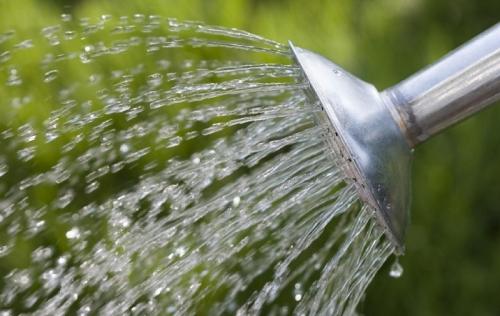

Pests and diseases
Phloxes very rarely get sick, pests attack mainly weak bushes. Basically, flower growers can face such troubles as:
- Variegation is a disease that can destroy an entire bush in a day. The rezuha mosaic virus changes the color of the petals, which, in turn, are covered with light stripes. The infected bush is very dangerous, it spreads the infection through insects, pollen. It is difficult to detect a virus on your own. Laboratory research can give one hundred percent accuracy.
- Powdery mildew is one of the most common diseases. The onset of the disease can be observed in late July or early August. The first symptom is the appearance of a white bloom on the leaves, gradually spreading throughout the plant. The flower loses its beauty, lags behind in development. Leaves dry, curl and fall off. The first thing that comes to mind when a disease is detected is how to treat powdery mildew. It is necessary to spray the bushes with copper-containing preparations. An ash tincture with soda ash and soap copes well with the disease. For prevention, phlox is treated with fungicides.
- Leaf spot is the appearance of brown spots on the plant. Treatment for diseases consists in spraying the flower with 1 percent burgundy liquid, after ten days, repeat the procedure.
Prevention of diseases and pests is the observance of simple rules for caring for the plant. It is necessary to regularly inspect the plant in order to prevent the spread of infection, to preserve the beauty and decorative effect of the bush.
Bright and delicate phlox flowers - tailored cultivation
Phlox are brightly blooming decorative flowers belonging to the Cyanophyte family.Today, there are over 60 varieties, most of them are grown by many growers. A feature of this flower is the ability to change depending on the climatic conditions of growth. In every garden, phlox must bloom, planting and caring for which, although they require special attention, but they will bring pleasure in contrast to more.
Description of the phlox species
In regions with a warm climate, phlox are erect, tall shrubs, reaching 0.5 - 1.5 m in height. There are plants in the form of semi-shrubs. Depending on the variety, phlox blooms start differently. Therefore, there are early, medium and late varieties.
Leaves are oval or lanceolate with whole edges, located opposite. Depending on the species, flowers are two to five centimeters in diameter. Each inflorescence contains ninety five-petal flowers. At the end of flowering, a fruit is formed in the form of a box.
In cultivated form, all varieties of phlox are perennials. The exception is Drummond's phlox and its varieties. These are annual crops.
The most common phlox that growers grow
- Subulate phlox.
An early flowering plant with branching stems and densely covered flowers of various colors depending on the variety. The subulate leaves of the plant barely make their way through the dense scattering of flowers. Thanks to this shape of the leaves, the plant got its name. Phlox subulate - light-loving decorative flowering plant. It is used to decorate alpine slides and rockeries.
- Another very beautiful and popular variety is paniculate phlox. It has many hybrid varieties - Orange, terry, etc. The flowering period of this perennial falls in July. Paniculate phlox is a plant with decorative foliage and fragrant large flowers of white, purple, orange and lilac. Phlox paniculata, planting and caring for which are not difficult, are rather successfully grown by many growers.
- Splayed phlox
- This is a perennial plant that, like the subulate phlox, blooms in May. A compact and miniature bush with small blue flowers looks very delicate and elegant. The splayed phlox has large lignified shoots and elongated leaves.
- Phlox Drummond is an annual plant native to Texas. It is characterized by a long flowering period that starts in June and ends in November. Phlox Drummond's leaves are lanceolate, oval, opposite. Phlox Drummond is not a tall plant, reaching 30 cm in height. There are also dwarf varieties with a height of 15 to 20 cm. Fragrant flowers can have a wide variety of colors, depending on the variety - white, yellow, purple or dark red. Phlox Drummond is unpretentious in care and cultivation.
Using phlox of different varieties, you can very beautifully decorate your garden area and make it original and unique. To do this, you need to know how to plant these flowers correctly, and what kind of care they need.
Reproduction and planting of phlox
Phlox can be grown using cuttings, cuttings or by dividing the rhizome. The most preferred method is seed.
Seed method with sowing directly into the ground
Sowing of phlox seeds collected in autumn is carried out at the end of November - at the beginning of December. You need to choose a permanent planting site, regardless of whether it is annual or perennial flowers.
Before planting seeds, the site is cleared of snow. Sowing seeds is carried out at a distance of five centimeters from each other. They are sprinkled with a thin layer of earth, about one centimeter, then covered with snow. For planting, you can use both garden and purchased land. The seeds have a high germination rate - up to 70% if planted for the winter.In the spring, when the air and earth warms up, their germination capacity decreases sharply.
After planting the seeds, in about a month, shoots will appear. As soon as they grow up and release 2-3 leaves, they are seated at a distance of up to twenty centimeters from each other. Planting of seedlings is carried out at a set time. Phlox Drummond, like its other annual relatives, is propagated by seed.
Still, the seedling planting method is more reliable. It is preferred by most gardeners, since severe spring frosts can provoke seed death.
To obtain seedlings, Drummond phlox seeds are sown in spring - early March. The first shoots will appear in 7-10 days. In the process of grooming, they are provided with good lighting, warmth and periodic watering. As soon as the seedlings grow up, after three weeks, they are seated separately. Landings are placed in a well-lit place, protecting from direct sunlight. At noon, flowers are covered with any covering material, you can use a newspaper.
Before transplanting plants to the garden plot, they are fed twice with mineral fertilizers. For this, preparations are used with a concentration of half that for adult plants. To make annual phloxes lush, they are pinched at the stage of formation of the fifth leaf.
Growing phlox through seedlings
Planting seedlings in the open field is carried out in late spring - in May, after the last frosts have passed. Flowers are planted at a distance of twenty centimeters from each other. It is very important to find a good site for planting these flowers. Both perennial and annual phloxes are frost and drought tolerant flowers. They don't react well to heat. Therefore, you need to plant flowers in a shaded place. At the same time, the flowering of phlox will not be plentiful, but rather long. Growing in partial shade, phlox flowers retain their natural and rich color, while in the sun they quickly fade.
Growing phlox in an annual crop
Annual phlox is best planted on high ridges away from trees and shrubs that have a powerful root system.
Seedlings are planted in light and loose soil enriched with humus. These flowers do not develop well and bloom on heavy and knocked down soils. It is not recommended to plant phlox on acidic soil, which can be deacidified with lime.
Annual phlox grow well on sandy soil.
By providing the plants with good watering, healthy flowering shrubs can be grown. If planting is planned on loamy soil, its composition is improved with the help of peat and organic matter. In each hole for planting seedlings, two handfuls of compost, vermicompost or ash are introduced. After that, the plants are planted, straightening the root system horizontally.
Summer care
Further care of phlox plantings, including Drummond, is very simple and not laborious. Periodic loosening of the soil and hilling of plants at the stage of active growth contributes to the rapid development of the root system.
In addition, the main care of annual phloxes includes regular application of organic and mineral fertilizers. The first feeding is carried out in the second half of May with liquid manure - twenty-five grams of the substance is diluted with one bucket of water. The second feeding is carried out at the beginning of June with the same solution with the addition of potassium salt and superphosphate. For the third time, annual phloxes are fertilized exactly one month later with top dressing, which was used during the first feeding. The fourth and final fertilization is carried out at the end of July with phosphorus-potassium preparations.
In the process of growing, Drummond phloxes need systemic watering in the morning and evening hours. For 1 sq. m. area with plantings poured two buckets of water. It is not recommended to water the flowers with cold water on hot days. This can provoke cracking of the plant root system.Dried flowers must be removed in a timely manner, which will make it possible to bloom with new ones.
The process of growing perennial phlox is approximately the same as for annual plants. However, there are some differences in this. Perennial phlox are planted in the spring. Before planting, the site is mulched with humus or peat. Seedlings are planted at a distance of one and a half meters from each other. After all, these are perennial plants, every year they will need more space.
Phlox subulate or splayed phlox acquired in the fall is not recommended to be planted in open ground. It is simply dug in to a depth of thirty centimeters in a place where there are no winds. After the soil is frozen, the flowers are mulched with dry foliage or peat.
Forced transplantation is carried out only if the bushes have grown too much and have lost their decorative qualities. The middle of the excavated plants is removed. The sides of the phlox are separated and seated separately.
In addition, young plants are planted in autumn, which were obtained by cuttings in the spring. Before planting, compost with sand is added to loamy soil, peat is added to sandy soil.
Prepared delenki are planted in pre-prepared pits at a distance of 50 cm from each other. Immediately after planting, the plants will need frequent soil moisture for several weeks. Two liters of water are poured under one bush at intervals of once every three days. After watering, the soil is loosened and mulched with a good layer of peat or humus.
The splay phlox, just like the styloid phlox, needs the same care as the Drummond phlox. The only difference in care is the difference in the amount of fertilizer applied. Perennial phloxes are fed five times per season. The last feeding is carried out during the formation of seeds in capsules. For this, phosphorus and potassium preparations are used, which are applied under the root of the plant in the evening immediately after moistening the soil.
With proper care and proper fertilization, perennial phloxes can grow and bloom in one place for up to six years.
Growing problems
These flowers often infect diseases and pests:
- Septoria is a fungal disease of phlox. Its appearance is indicated by dark brown spots on the foliage, which increase in size. Affected flowers are repeatedly treated with Bordeaux liquid.
- Phomosis is a fungal disease that is very dangerous for phlox. Its branches become brittle and the leaves dry out. For preventive purposes, the bushes are sprayed with colloidal sulfur at a temperature of at least eighteen degrees.
- Verticillium wilt is a disease that destroys the root system of plants.
- The filamentous tiny worm and nematode are the main pests of phlox. These insects infect stems, inflorescences and flowers. After that, the plants lose their decorative effect. Affected specimens are dug up and burned. It is recommended to treat the soil three times with nematicides at intervals of twenty days.
- Phloxes eat caterpillars, slugs, which are removed by hand. If there are too many insects, the plants should be treated with preparations for gnawing insects.
Variants of using phlox in landscape design
Phlox Drummond, thanks to its abundant and bright flowers, is able to decorate any area, allowing you to create attractive and original compositions in landscape design. Low-growing varieties are often used for decoration as a border of garden paths.
It also works well for group compositions. Phlox Drummond is planted in various flower beds and flower beds, mixborders. Several plants will look great when planted in a wide and deep pot or container. This allows you to decorate a gazebo, veranda and even a balcony.
Choosing a place and soil for planting


How to grow Drummond phlox?
Phlox Drummond loves sunny places and fertile permeable soils. He does not belong in the shade of trees and bushes.In areas where moisture and damp air accumulate, plants begin to stagnate, rot and do not bloom. Landings must be protected from dry or cold northerly winds.
Soils for phlox should not be clayey, in which water stagnates, or too light sandy, unable to retain moisture. To improve the structure, peat, sand, compost, humus, rotted sawdust are added to the clay soil, and clay is added to the sandy soil.
Description of colors


In one complex inflorescence of phlox, about 90 pieces of flowers can be collected. Each of them has 5 stamens and folded petals, 1 pistil.
Their tubular-funnel-shaped shape resembles simple, semi-double and double stars, snowflakes with a rich palette of tones and halftones. These are beige, cream, red, pink, yellow, blue, purple, brown, black and other colors.
Phloxes have an amazing ability to change their appearance, responding to the whims of "mother nature", the climate. So, for example, in the bright sun, their colors acquire brightness, and in cloudy times they dim.
And the bushes themselves with a green mass of developed shoots resemble a colorful ball. Under more favorable conditions, they will be erect, even up to 1.5 m in height. There are also phlox-shrubs.
And growing at high altitudes, they will be bryophyte and dwarf up to 25 cm with evergreen leaves. Most often, erect phloxes are grown with whole-edged, sessile, oval, lanceolate, oblong ovoid leaves.
How to choose seeds
Planting material can be purchased at any flower shop. There are many varieties on the market. The flowers you like can be planted next year by collecting seeds from the flower bed.
Advice! During the period of abundant flowering, you can mark with a marker or tie with a thread those phlox, the seeds of which will be collected in the future.
When collecting seeds, you must follow some rules:
- varieties marked F1 are not suitable for breeding;
- it is worth marking dense specimens with a beautiful inflorescence;
- the collection is carried out in sunlight and in the absence of wind;
- a more appropriate time in the afternoon;
- remove the seeds from the box, remove all debris;
- place the planting material in separate boxes, store in a dry place before sowing.
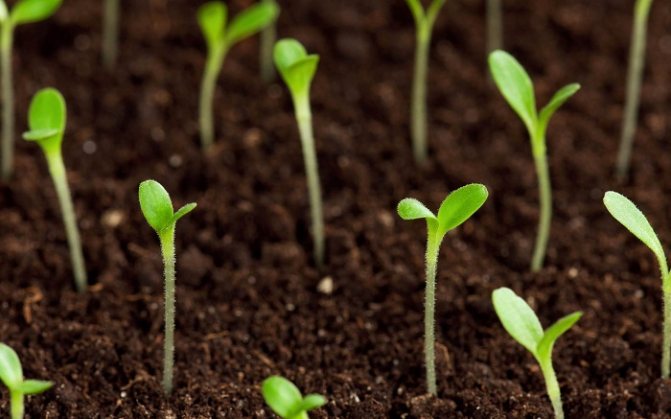

Important! Hybrids marked F1 do not retain their appearance when bred with harvested seeds.
After the plant stops blooming, it is removed from the ground in a place with roots. Flowers are laid out on paper. After three weeks, the inflorescences dry out. It is necessary to grind them with your palms to separate the seeds from the capsules.
Tips and tricks for the care of perennial phlox
Seeds, stems, root cuttings, axillary buds and shoots (summer-autumn), separated bushes are planting material for perennial phlox.
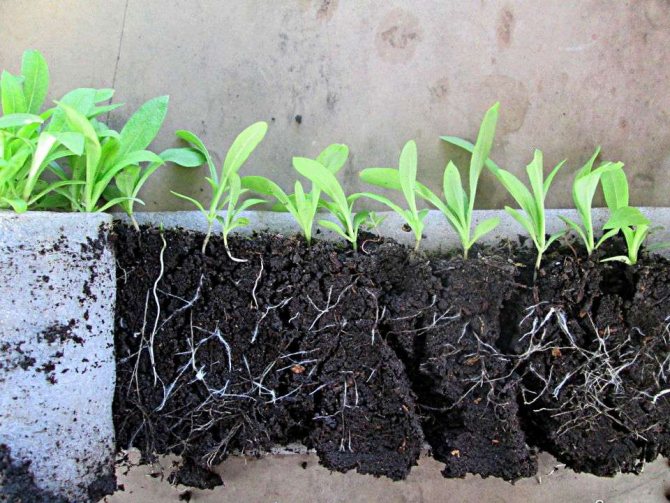

They are divided into 4 groups:
- the first includes tall bushes up to 90-180 cm - Phlox: maculata, paniculata, glaberrima and others. They bloom all summer and in the first decade of autumn;
- the second includes bushes up to 40-70 cm high - Phlox: ovata, amoena, pilosa and others. Bloom in late spring - first half of summer;
- the third group includes bush and creeping species, 25-30 cm high - Phlox: stolonifera and divaricata. They delight with flowering from late spring to mid-summer;
- the fourth group includes bushes that spread or rise to a height of 5-15 cm - Phlox: douglasii, nivalis, subulata and others, blooming in spring and until mid-summer.
When to plant and how to care
When planting in the fall, you need to dig deep into the ground on the site. Spring blooming and low phlox species need to clear the land of weeds so that the flowers do not fight them in the first year of life.
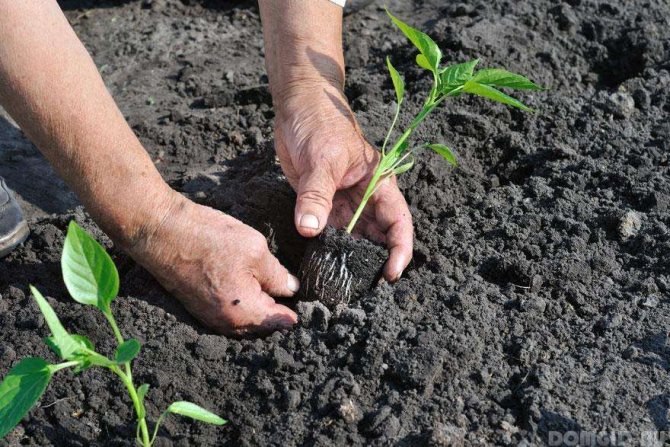

For bushes, light loamy soil is better; lime should be added to any soil. The place should be sunny, but not for hybrids that have bright flowers. Their color fades and loses its spectacular appearance. Therefore, partial shade will be acceptable for them.
Phlox with dark flowers will look favorably against the background of light-colored inflorescences, even in the evening. With abundant flowering, you should regularly apply top dressing, loosen the ground, and clear weeds. Paniculate species grow well in full sun and partial shade. Low-growing species - in well-lit places, but do not lose their decorative effect in semi-shaded ones.
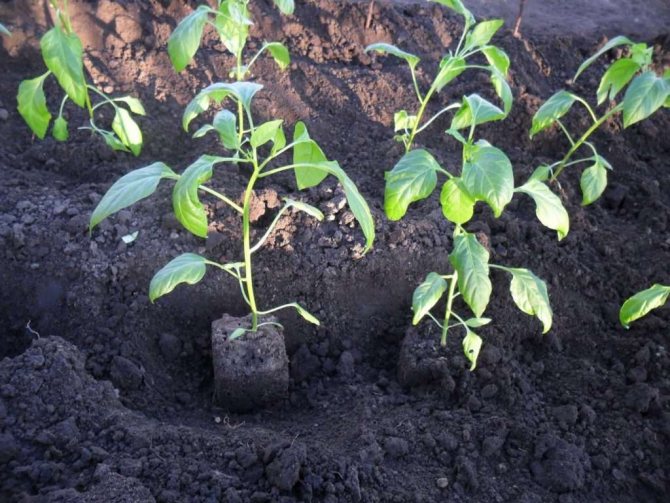

Watering is carried out abundantly, but not often during not very dry days. When the soil dries quickly, water is often watered in the afternoon.
Care
Watering
Waterlogging during watering and long breaks during a drought should not be allowed. With a moisture deficit in a hot summer, phloxes form fewer buds, and flowering will be scarce.
You can reduce watering and reduce moisture evaporation by mulching the bushes with peat, humus. The soil around the plant is loosened regularly and shallowly so as not to damage the surface roots.
Top dressing
Phlox Drummond loves regular feeding. During the care of seedlings, mineral complexes are used once every 10 days. Then, during the summer, starting from the budding stage, the plants are fed 2-3 times with solutions of mineral fertilizers. Removing wilted flowers encourages the formation of new ovaries.
The specifics of sowing annual plants
Sowing annual phlox is slightly different from perennial varieties. There is one caveat: the seeds are not covered with earth, but pressed down. Further, the plant will develop and descend to the desired depth on its own.
Terms and technology of planting works
Sowing of annual phlox plants begins in March, to transplant seedlings in May. If you sow earlier, you will have to carry out an additional procedure to add light. It is not always convenient and time-efficient.
The landing calculation is carried out taking into account climatic conditions and the approximation of warm stable weather. Frost after planting should not be observed. Young phlox will not tolerate them.
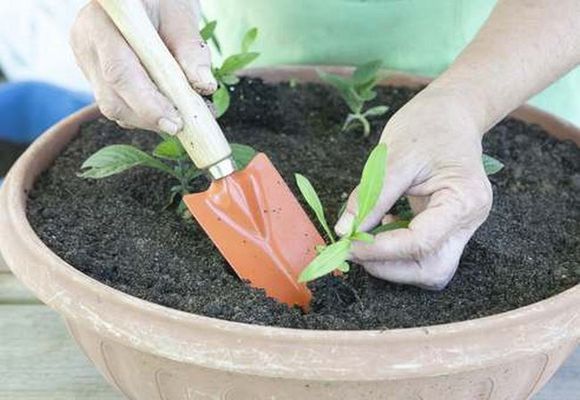

Planting technology, preparation of the substrate, seed material and capacity is similar to other crops and phlox varieties.
Care after landing
They take into account the fact that even if the seeds of annual phlox are planted correctly, the emergence of seedlings occurs within 2-3 weeks. The main thing during this period is to create comfort for germination of the sprout:
- watering in the form of spraying from a spray bottle;
- the presence of an artificial greenhouse (film cover of the container);
- loose substrate;
- ventilate and temper regularly;
- before the sprouts appear, the containers are in a shaded place.
With the appearance of the green tip of the phlox, the seedlings are exposed to the light. Drafts must not be allowed, as well as low temperatures.
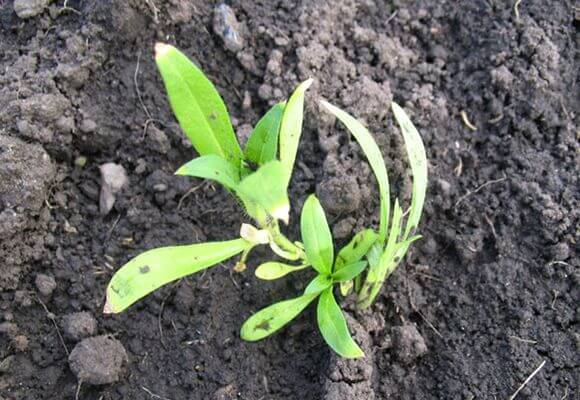

Picking and landing on the garden
A pick is carried out only after the formation of three full-fledged leaves. The sprout is carefully transplanted into a prepared container with a substrate. The root must be completely in the ground.
Pinching is also recommended. This will help the phlox to become plump and thick.


